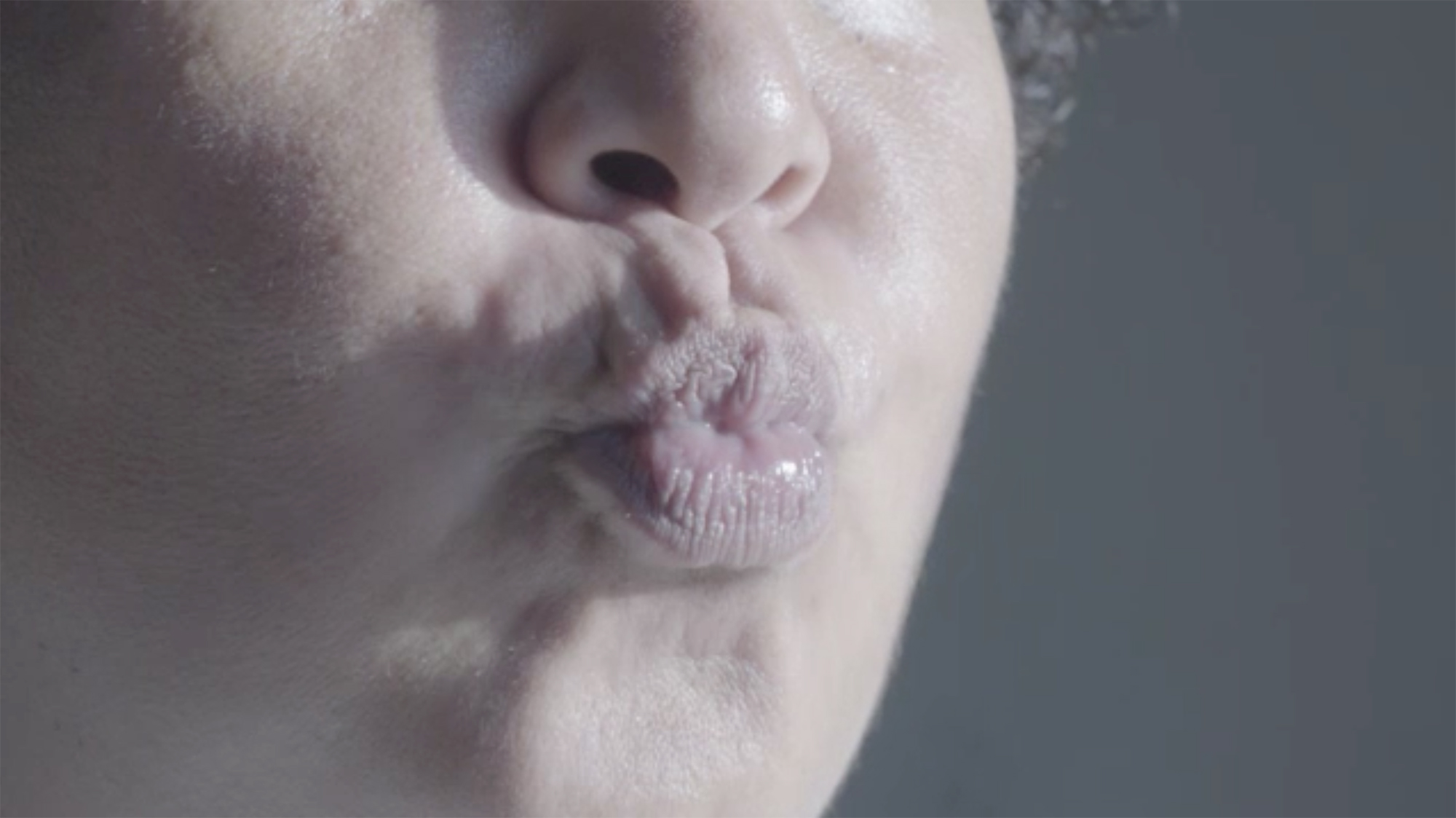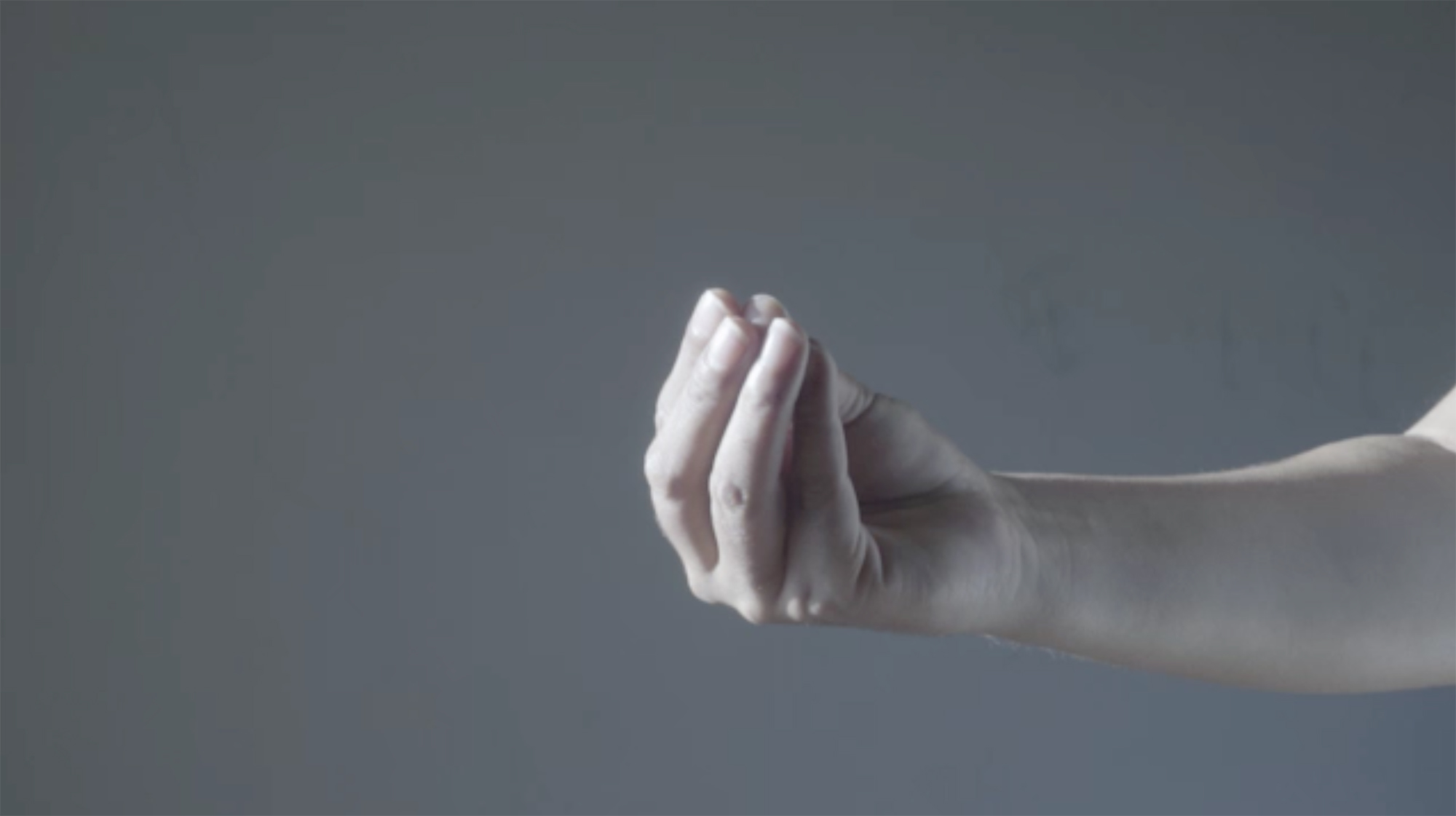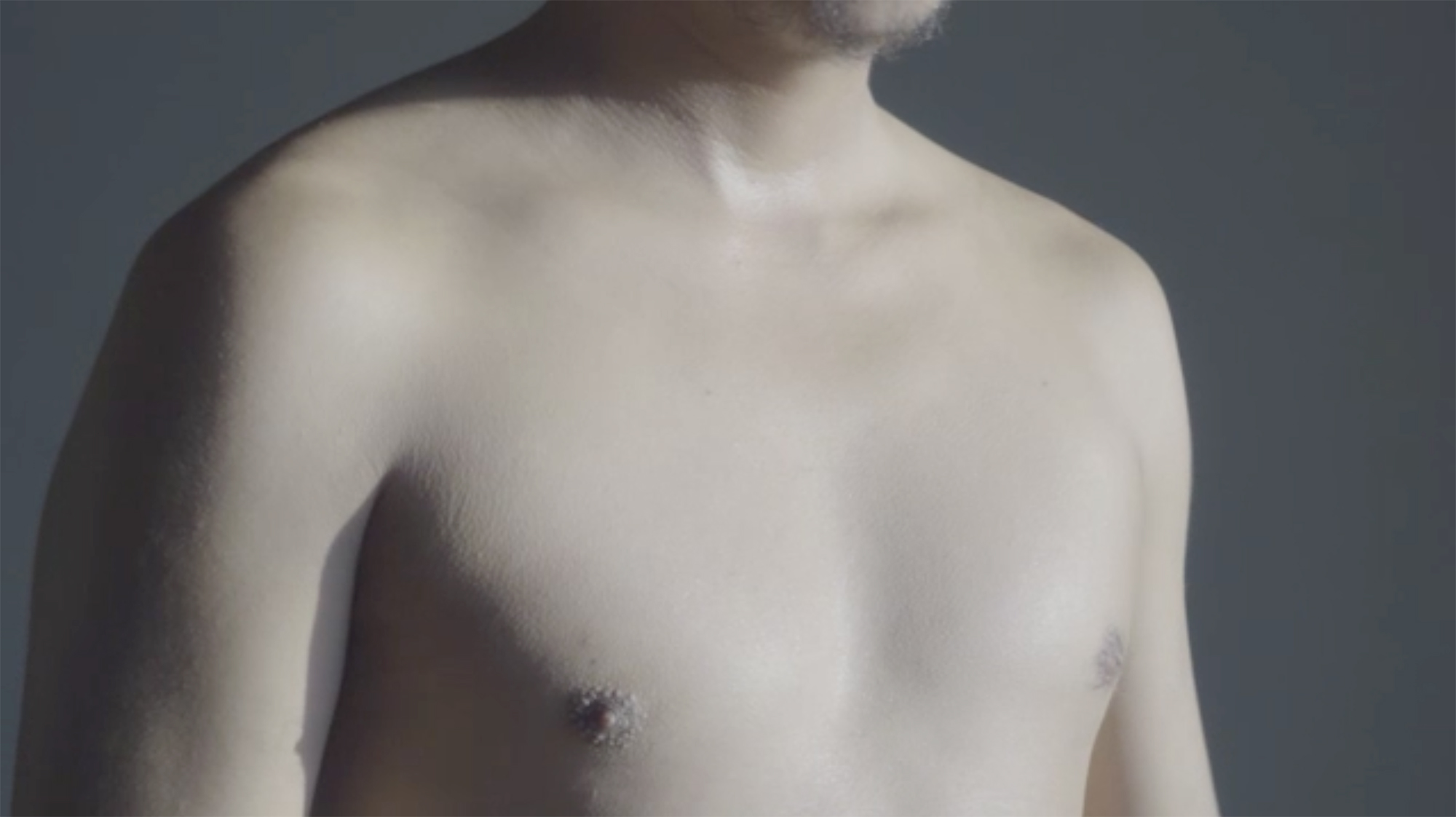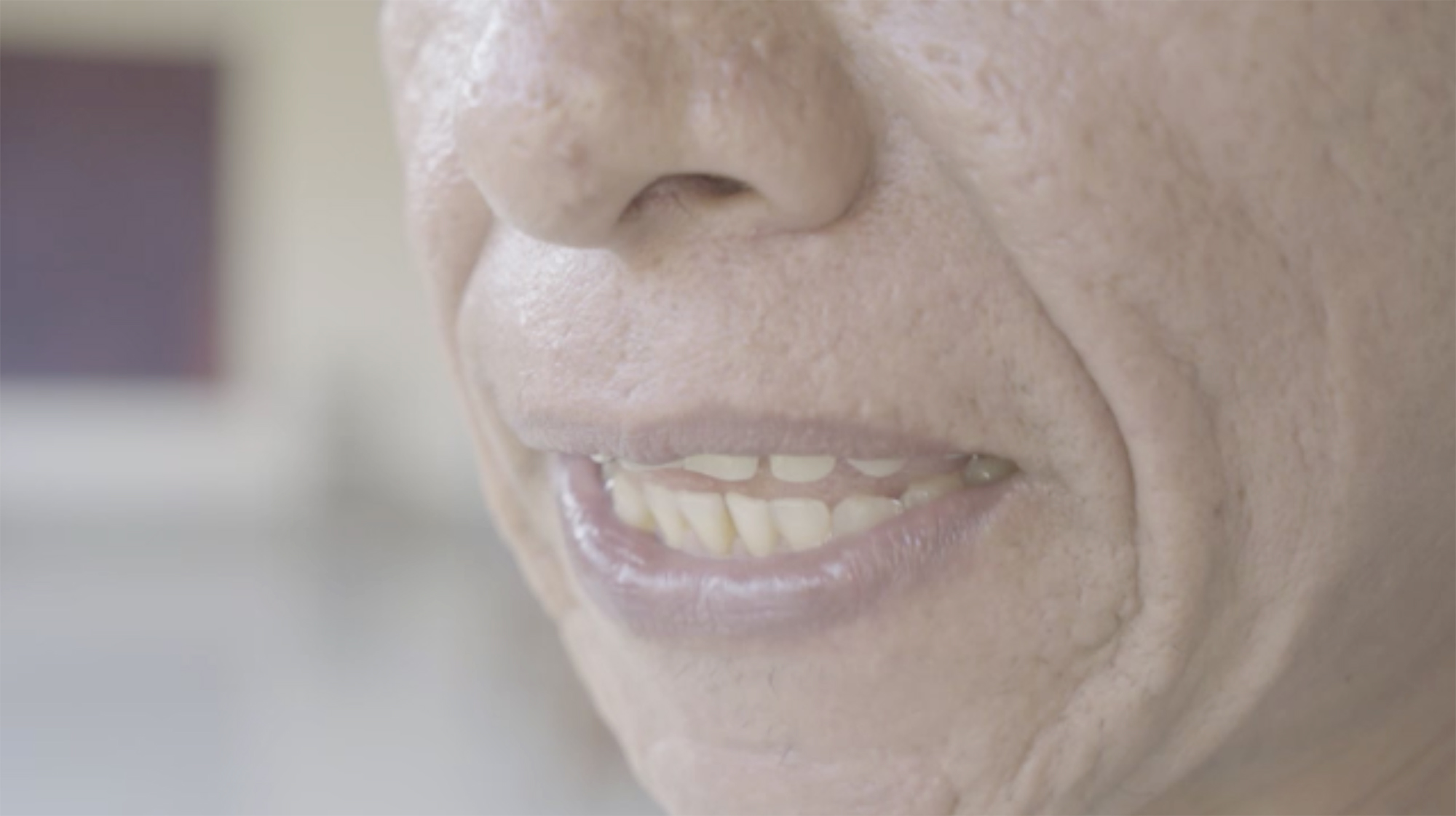Paraíso Interno
Paradise Inside
Short documentary, 16mm, colour, sound, 10 min
2024, Austria / Mexico
Paraíso Interno
Das innere Paradis
Kurzdokumentarfilm, 16mm, Farbe, Ton, 10 min
2024, Österreich / Mexiko
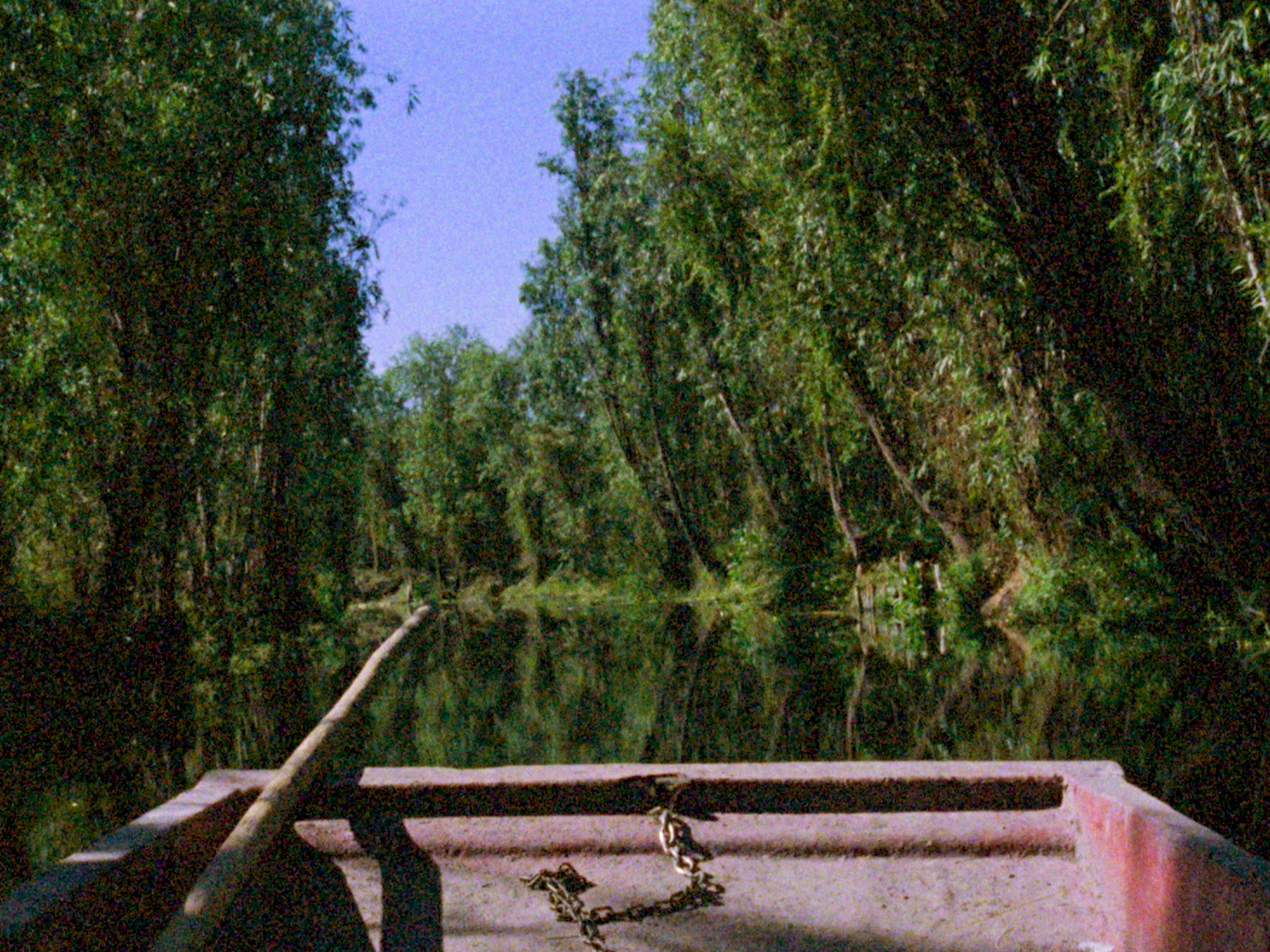
Written, directed and produced by
Raphael Reichl
Director of Photography
Raphael Reichl
Editing
Raphael Reichl
with
David Fernando Díaz Jiménez
Executive Producer
Tim Luna
Associate Producer
Pablo Martínez Zárate
Production Company
Tortuga Libertad
"Paradise Inside" is an intimate portrait of David Jimenez, who has created his own paradise in the middle of a metropolis of millions. Inspired by the ideas of the anthroposophist Rudolf Steiner, he grows his own vegetables on his so-called floating garden. The story tells of a young man who challanges all odds, when all around him an enormous industrial consumer landscape is clogging up the canals of Xochimilco, Mexico City.
Regie, Drehbuch und Produktion
Raphael Reichl
Kamera
Raphael Reichl
Schnitt
Raphael Reichl
mit
David Fernando Díaz Jiménez
Executive Producer
Tim Luna
Associate Producer
Pablo Martínez Zárate
Produktionsfirma
Tortuga Libertad
"Paradise Inside" ist ein persönliches Porträt von David Jimenez, der sich inmitten der Millionenmetropole, Mexiko Stadt, sein eigenes Paradies geschaffen hat. Inspiriert von den Ideen des Anthroposophen Rudolf Steiner, baut er auf seinem sogenannten schwimmenden Garten sein eigenes Gemüse an. Die Geschichte erzählt von einem jungen Mann, der sich gegen alle Widrigkeiten behauptet, während um ihn herum eine riesige industrielle Konsumlandschaft die Kanäle von Xochimilco verstopft.
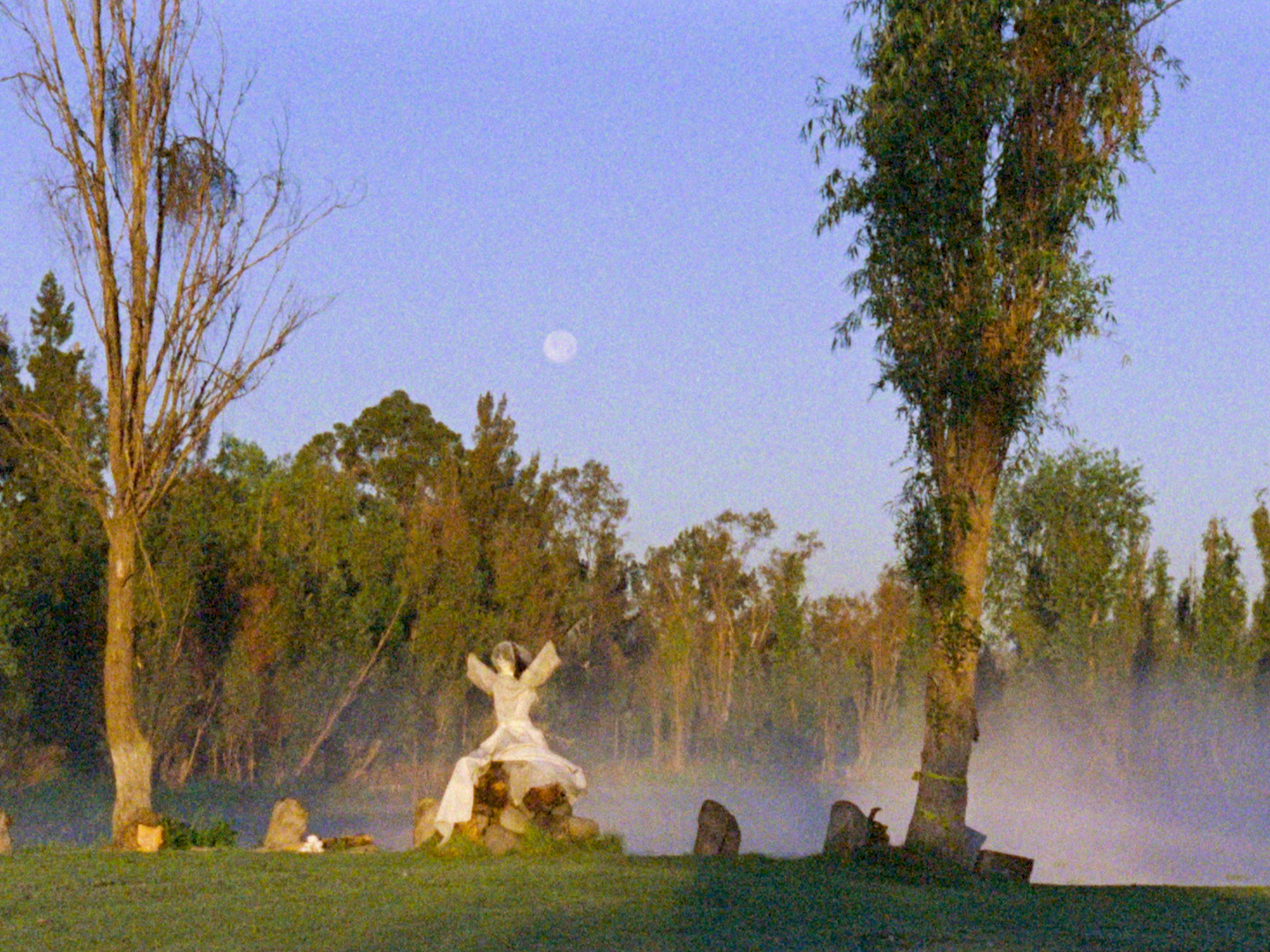
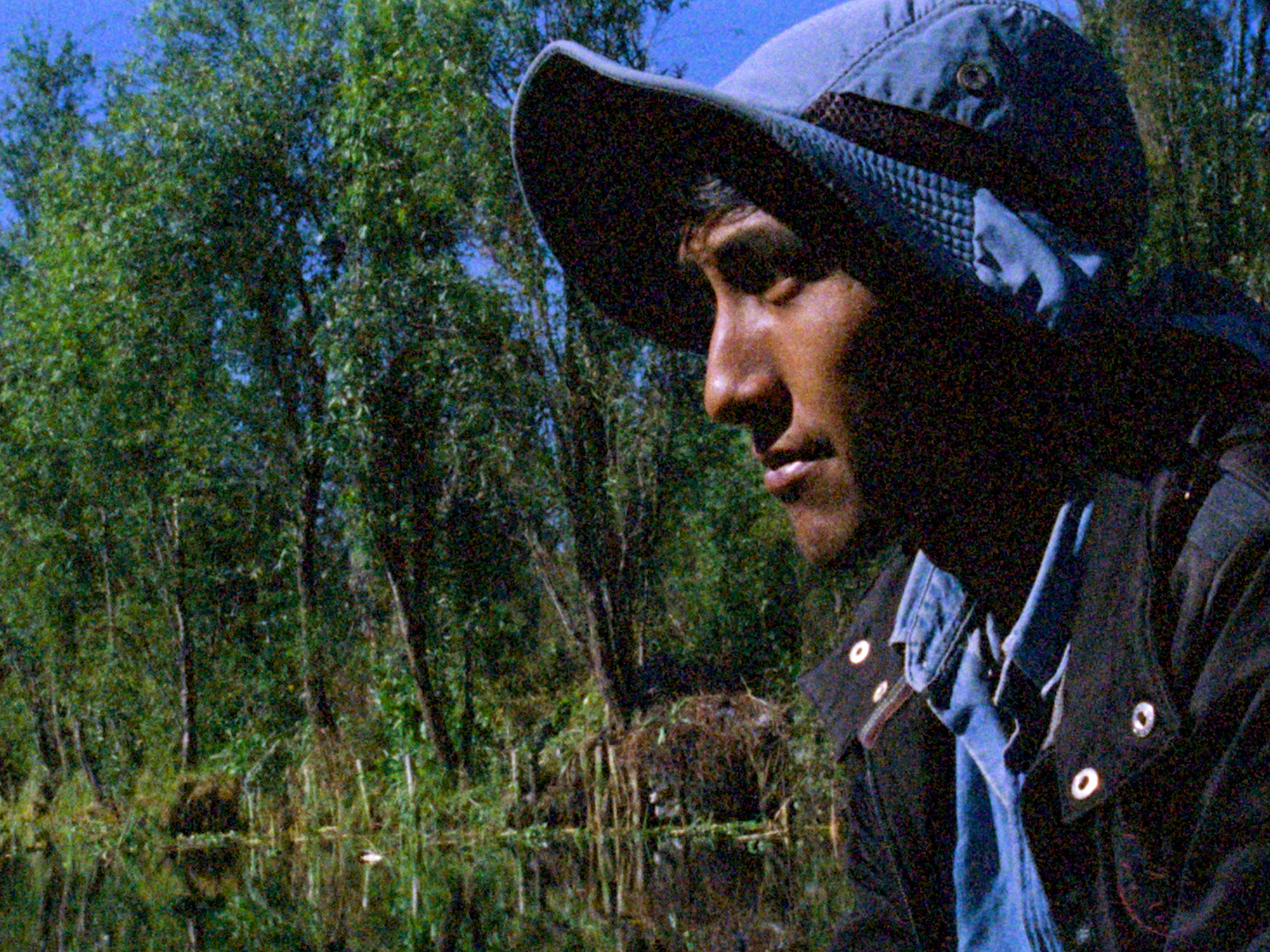
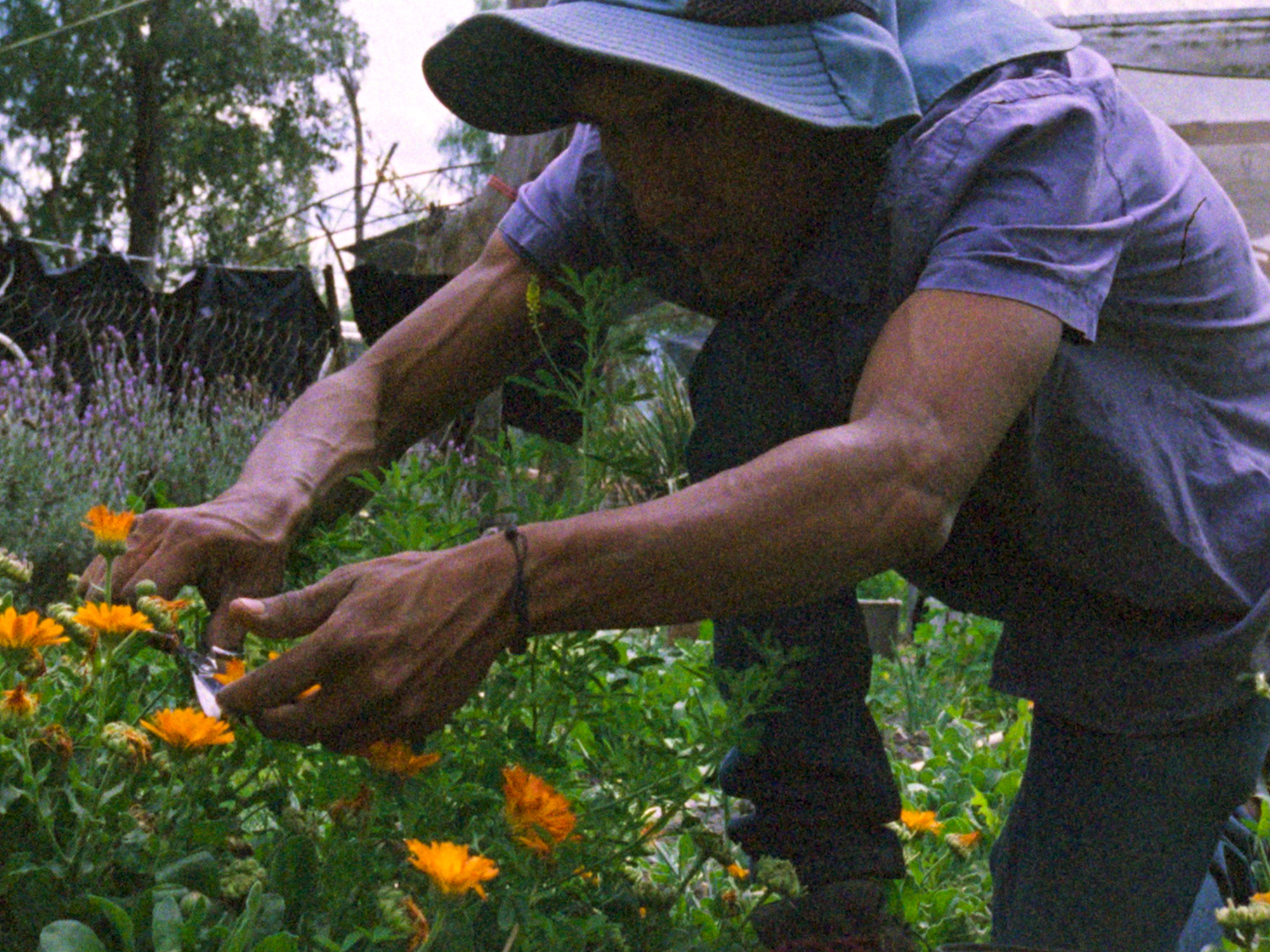

La Escondida
The Hidden One
Documentary film, full HD, colour, sound, 52 min
2023, Austria / Mexico
La Escondida
Die Verborgene
Dokumentarfilm, full HD, Farbe, Ton, 52 min
2023, Österreich / Mexiko
Written, directed and produced by
Raphael Reichl
Music composed by
Marius Houschyar
Director of Photography
Raphael Reichl
Editing
Raphael Reichl, Tim Luna
Collaboration with
Alison Raymundo Pérez, Abigail Santos Canseco, Leslie Ariadna Santiago Martínez, Yenisei Merlín Bautista, Néstor Daniel de los Santos Ruiz, Pedro Ramos Lazaro, Timoteo Rodríguez, Raul Hernandez, Damian de la Cruz, Norberto Larino, Modesto Rivera, Elíder de la Cruz, Bartolomeo Cruz, Isidro Altamirano Ríos
Narrators
Mara Chavez, Pablo Martínez Zárate
Executive Producer
Tim Luna
Associate Producer
Andreas Reisenbauer, Arturo Zárate
Production Company
Reisenbauer Film- und Multimedia Produktion
“La Escondida” is a hidden protagonist of the film who speaks to us through the soul of nature. There is literally a hidden port in transition on the Oaxaca coast. Where the place was once baptized due to the myth of a kidnapped indigenous woman in colonial times, today the place is being discovered due to gentrification through tourism and forced environmental destruction. With a personal approach, through encounters with construction workers and turtle conservationists, the film shows the exploitative working conditions of the locals.
Film festivals and exhibitions
Lane Doc Fest (2023 / US / Official Selection)
Capri Hollywood International Film Festival (2023 / IT /
»Best Documentary« Special Award)
Festival du Film Vert (2024 / CH / Official Selection)
Las Cruces International Film Festival (2024 / US / Official Selection)
Regie, Drehbuch und Produktion
Raphael Reichl
Musikkomponist
Marius Houschyar
Cinematographie
Raphael Reichl
Schnitt
Raphael Reichl, Tima Luna
Mitwirkende im Film
Alison Raymundo Pérez, Abigail Santos Canseco, Leslie Ariadna Santiago Martínez, Yenisei Merlín Bautista, Néstor Daniel de los Santos Ruiz, Pedro Ramos Lazaro, Timoteo Rodríguez, Raul Hernandez, Damian de la Cruz, Norberto Larino, Modesto Rivera, Elíder de la Cruz, Bartolomeo Cruz, Isidro Altamirano Ríos
Erzähler*innen
Mara Chavez, Pablo Martínez Zárate
Executive Producer
Tim Luna
Associated Producer
Andreas Reisenbauer, Arturo Zárate
Produktionsfirma
Reisenbauer Film- und Multimedia Produktion
"La Escondida" ist eine versteckte Protagonistin des Films, die durch die Seele der Natur zu uns spricht. Es befindet sich buchstäblich ein versteckter Hafen an der Küste von Oaxaca im Wandel. Wo einst in der Kolonialzeit eine Bucht aufgrund des Mythos einer entführten indigenen Frau getauft wurde, wird sie heute aufgrund vom wirtschaftlichen Wachstum durch Tourismus und zwangsweiser Umweltzerstörung entdeckt. Mit einer persönlichen Annäherung, durch Begegnungen mit Bauarbeitern und Schildkrötenschützer*innen, zeigt der Film die ausbeuterischen Arbeitsbedingungen der Einheimischen.
Filmfestivals und Ausstellungen
Lane Doc Fest (2023 / US / Official Selection)
Capri Hollywood International Film Festival (2023 / IT /
»Bester Dokumentarfilm« Special Award)
Festival du Film Vert (2024 / CH / Official Selection)
Las Cruces International Film Festival (2024 / US / Official Selection)
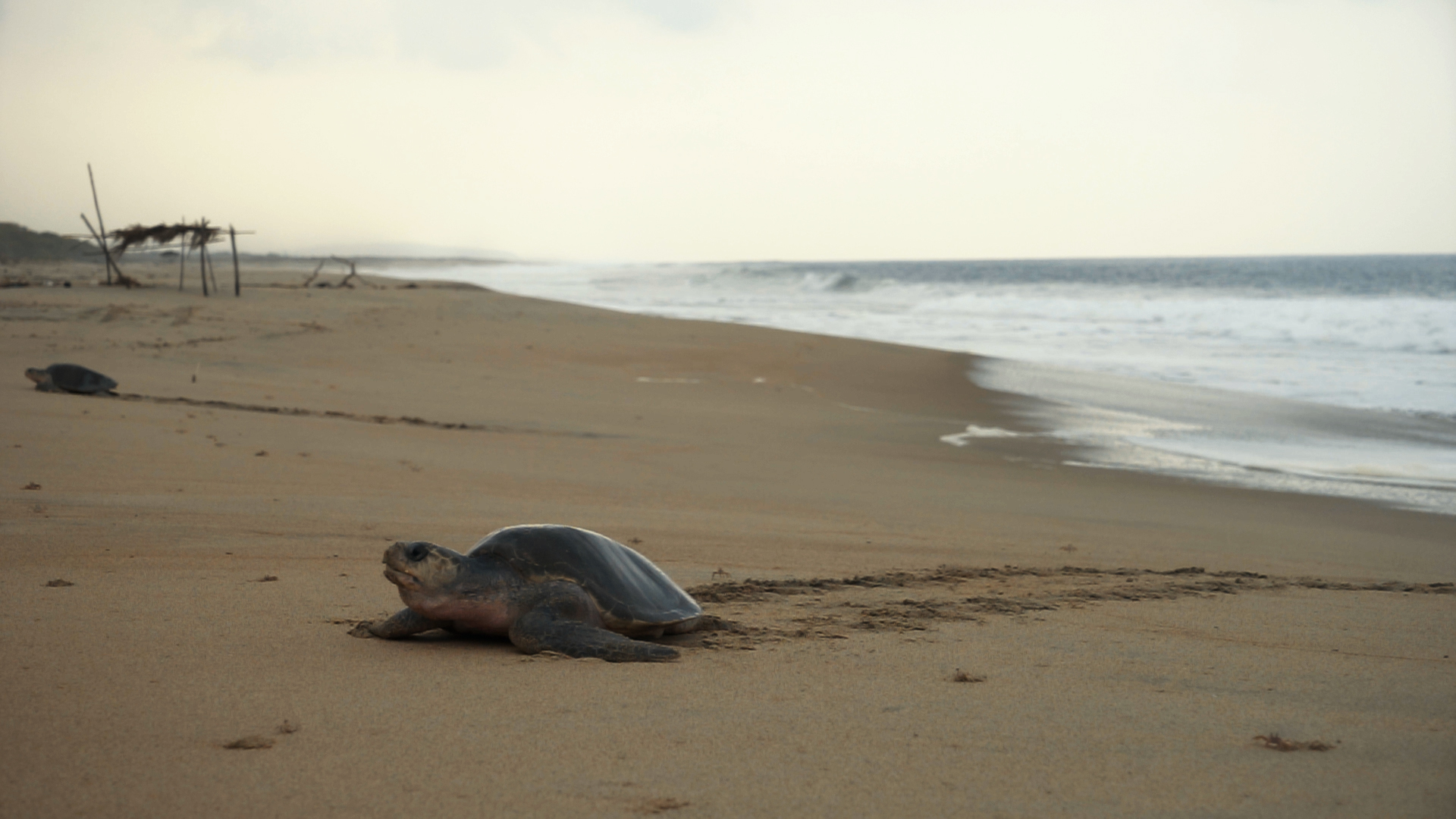
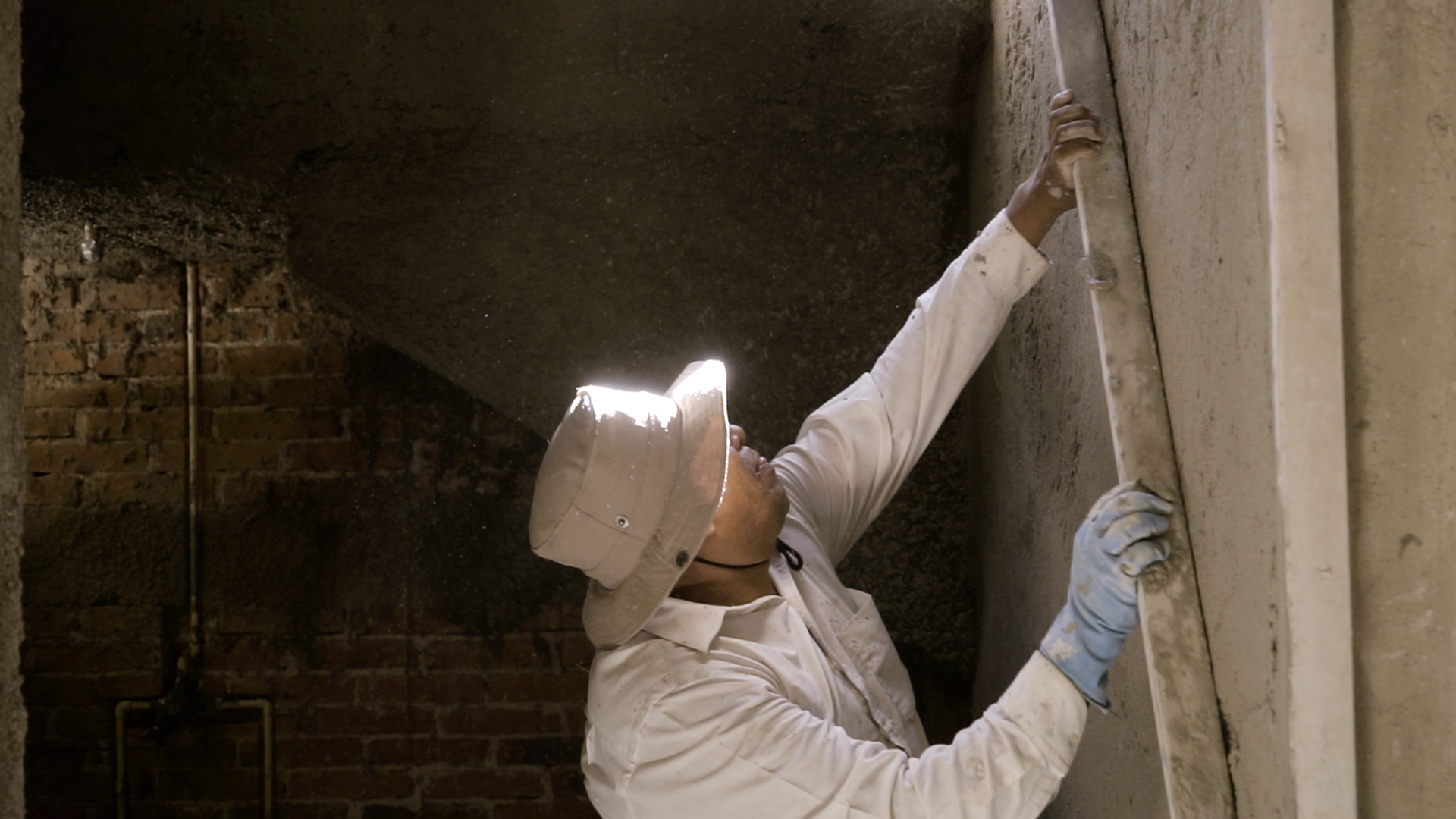
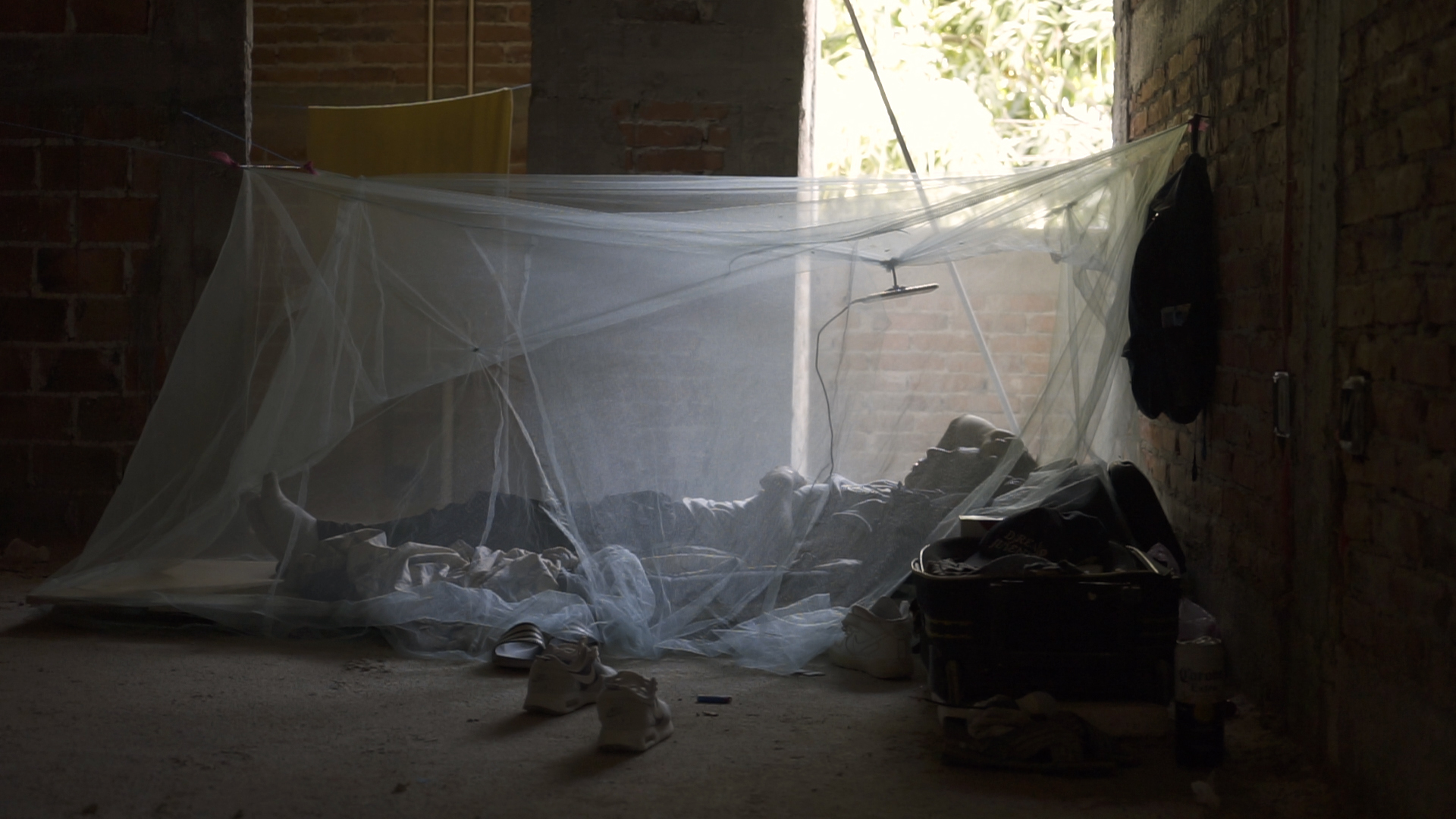

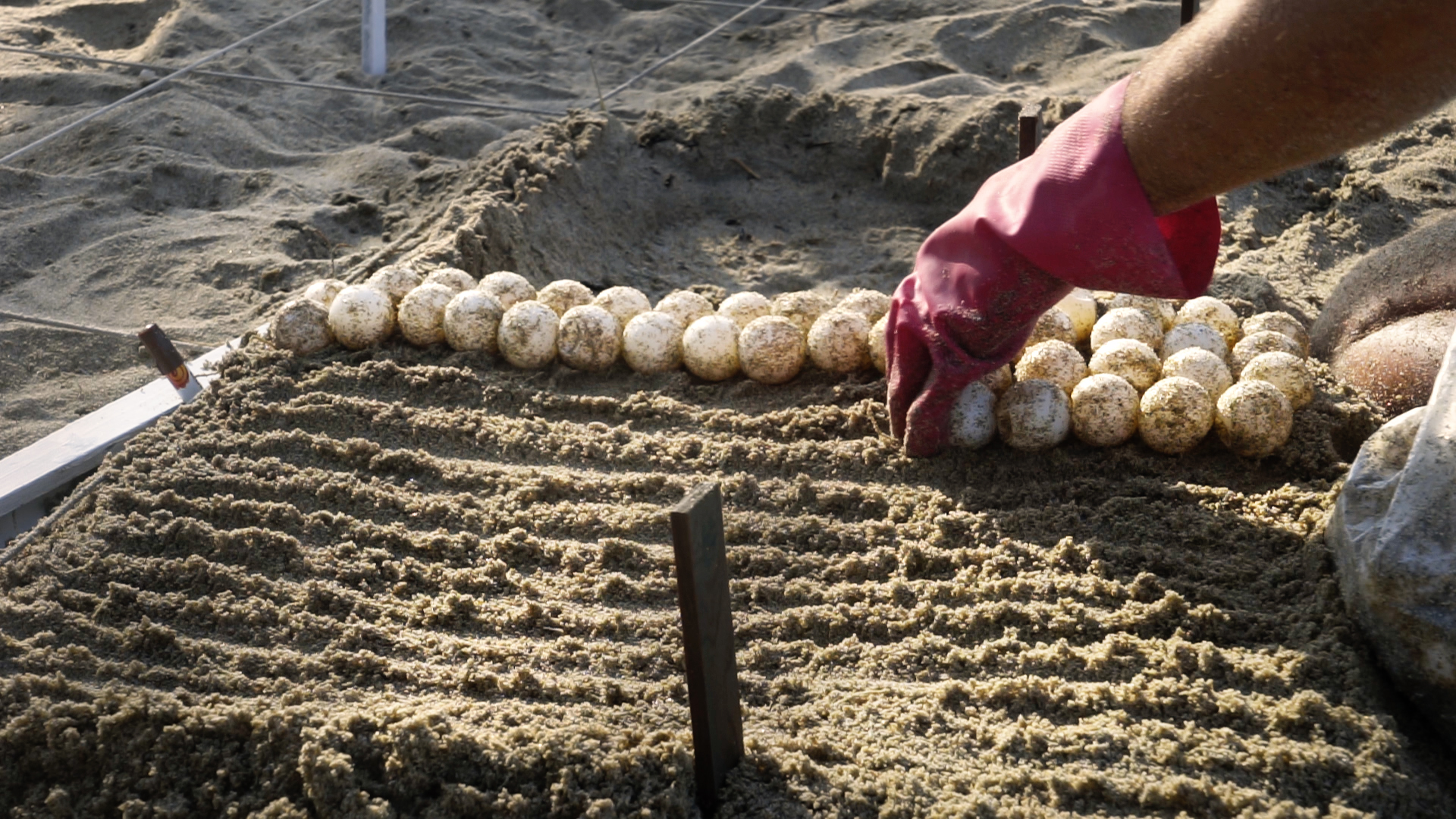
Andar pisando en cascarones arenosos
Walking on sandy eggshells
2-Channel Installation, 220 × 125 × 50 cm, 23 min
(loop)
2022, Austria / Mexico
Director, Camera, Editing
Raphael Reichl
Collaborations
Camp Tortuguero Palmarito: Alison Raymundo Pérez, Abigal Santos
Canseco, Lesley Adriana Santiago Mártinez, Yenisei Merlín
Bautista, Néstor Daniel de los Santos Ruiz
Construction men: Pedro Ramos Lazaro, Timoteo Rodríguez,
Raul Hernandez, Damian de la Cruz, Norberto Larino, Modesto Rivera, Elíder de la Cruz
Turtle eggs washed by the tide, naked feet in sandals and the noise of a jackhammer. Again and again he swings a bucket onto his shoulders before emptying it onto a mountain of rubble. Every turn he walks is counted, just like every egg.
Landing point of the conquistadors, the occupation of the mind. Nature has become territory. The view of the borderless horizon of a globalisation that always had a lack of grounding, reality and consistent materiality.
The film reflects the parallelism of two different working worlds in Mexico and enables global reflections. It is an experiment to make contradictions tangible in the form of a cinematic montage—also the contradictions in artistic practice. The images want to take position, with the wish to approach other perspectives.
(Written by Viktor Rabl und Raphael Reichl)
Installation view: Expositur Vordere Zollamtstraße 7, University of Applied Arts, Vienna
Andar pisando en cascarones arenosos
Auf sandigen Eierschalen laufen
2-Kanal-Videoinstallation, 220 × 125 × 50 cm, 23min
(Loop)
2022, Österreich / Mexiko
Regie, Kamera, Schnitt
Raphael Reichl
Mitwirkende
Schildkrötencamp: Alison Raymundo Pérez, Abigal Santos
Canseco, Lesley Adriana Santiago Mártinez, Yenisei Merlín
Bautista, Néstor Daniel de los Santos Ruiz
Bauarbeiter: Pedro Ramos Lazaro, Timoteo Rodríguez,
Raul Hernandez, Damian de la Cruz, Norberto Larino, Modesto Rivera, Elíder de la Cruz
Schildkröteneier von der Flut umspült, nackte Füße in Sandalen und der Lärm eines Presslufthammers. Wiederholt schwingt er einen Kübel auf seine Schultern, bevor er ihn auf einen Berg aus Schutt entleert. Seine Gänge werden abgezählt, genau wie jedes Ei.
Landungspunkt der Konquistadoren, die Inbesitznahme des Geistes. Die Natur ist zum Territorium geworden. Der Blick auf den grenzenlosen Horizont einer Globalisierung, der immer schon Bodenhaftung, Realität und konsistente Materialität fehlte.
Der Film reflektiert die Parallelität verschiedener Arbeitswelten in Mexiko und lässt globale Betrachtungen zu. Es ist der Versuch, die erlebten Widersprüche in Form einer filmischen Montage erfahrbar zu machen – auch die Widersprüche im künstlerischen Tun. Es sind Bilder, die Position beziehen wollen, mit dem Wunsch, sich anderen Perspektiven anzunähern.
(Text von Viktor Rabl und Raphael Reichl)
Ausstellungsansicht: Expositur Vordere Zollamtstraße 7, Universität für angewandte Kunst, Wien
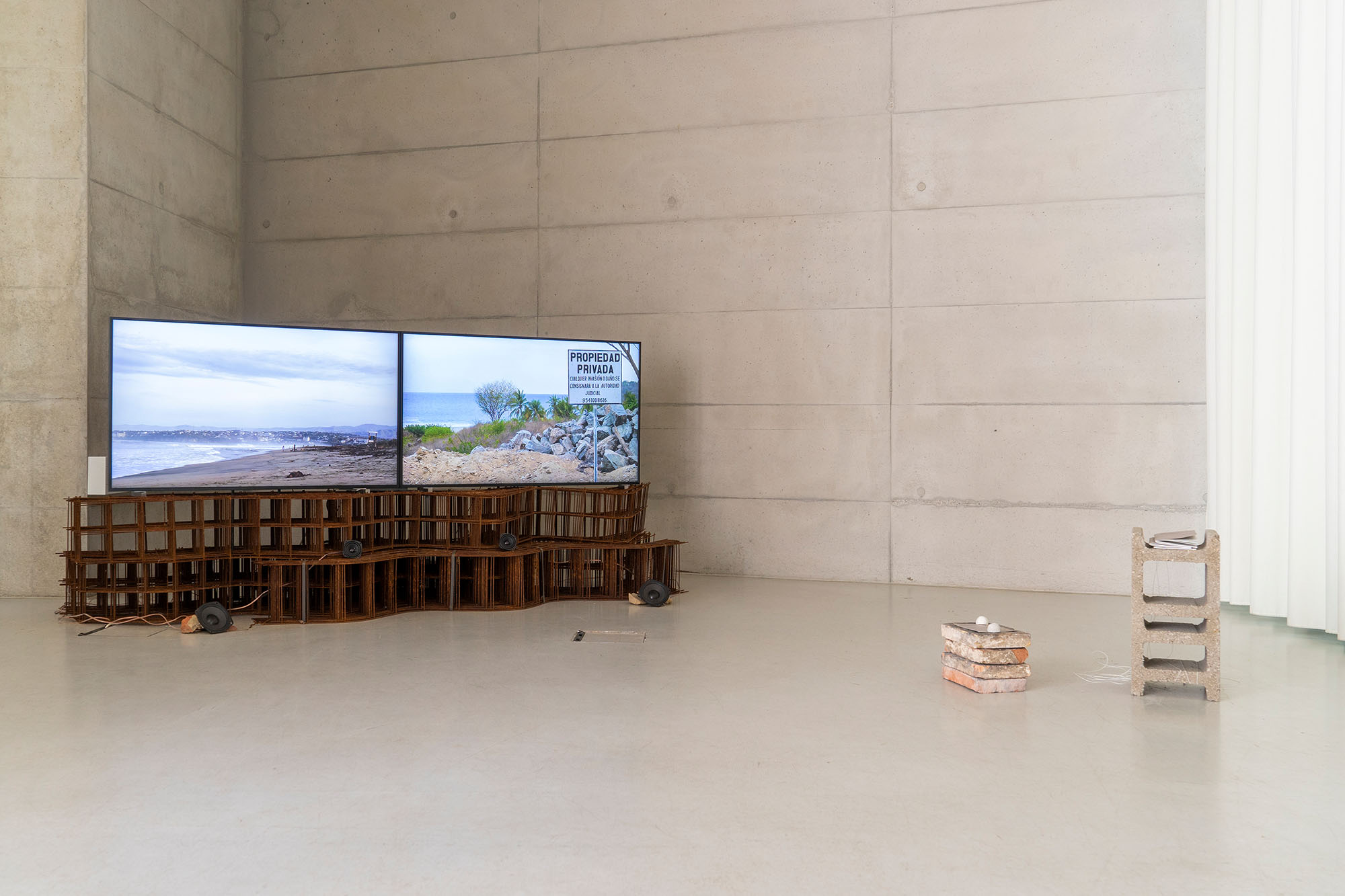
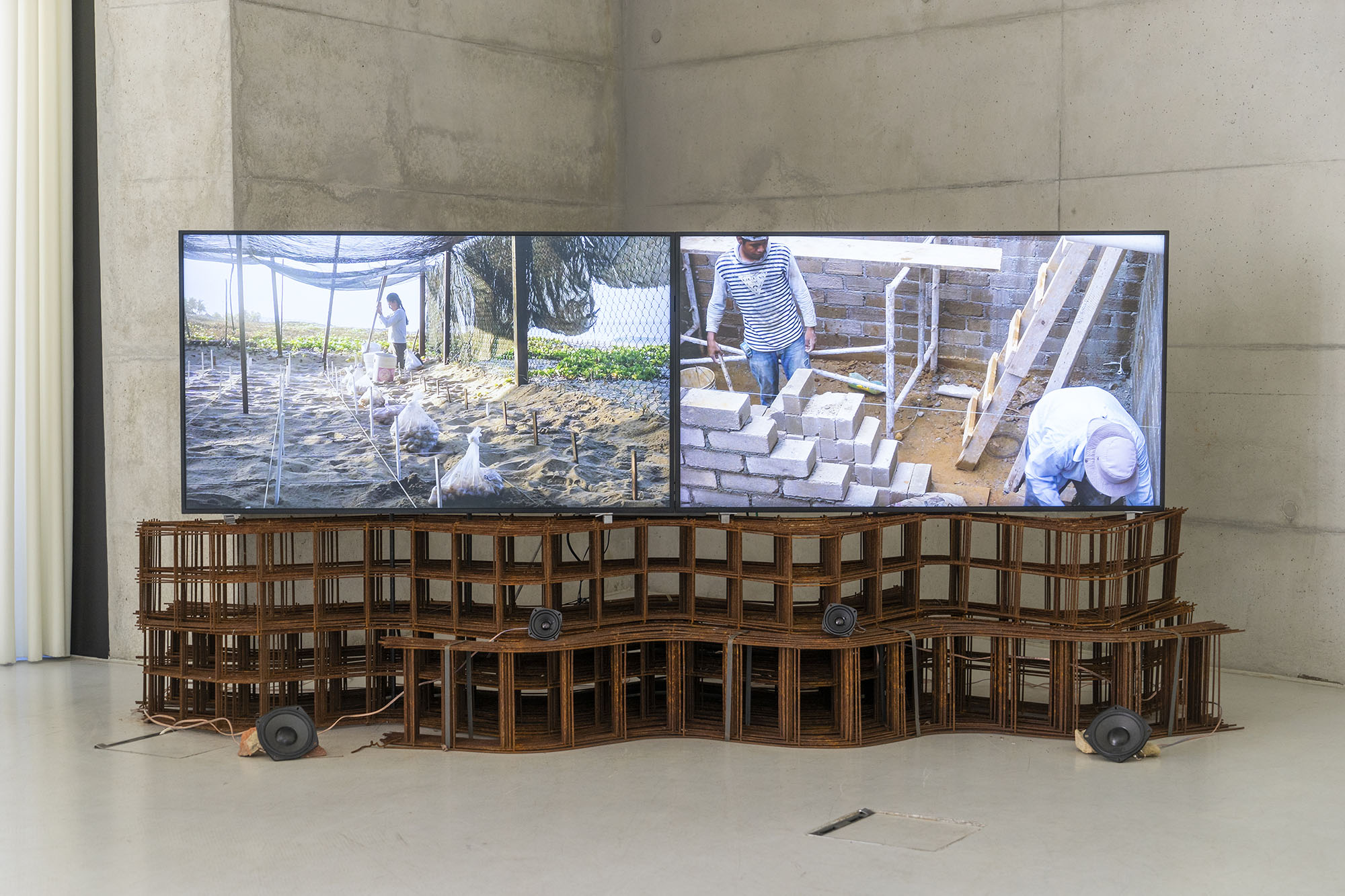
Ahuehuete
The Ancient Water Tree
Video, color, sound, 6 min
2022, Mexico
Director, Camera, Editing
Raphael Reichl
Voice
Angel Villanueva
The village of Tule is located in the state of Oaxaca, Mexico. This small town carries within a story of remembrance of the Mixe and Zapotec indigenous identity. Under the glory of a tree, the so-called Ahuehuete, lies an over two thousand year old history. Through its presence, the myth of its own birth survives across generations. The tale—told by Angel Villanueva—not only preserves the cultural heritage that is revived through storytelling, it also counteracts the suppression of indigenous identity and supports the resistance process that began since the colonisation about 500 years ago.
Ahuehuete
Der alte Wasserbaum
Video, Farbe, Ton, 6 min
2022, Mexiko
Regie, Kamera, Schnitt
Raphael Reichl
Stimme
Angel Villanueva
Das unscheinbare Dorf Tule liegt im mexikanischen Bundesstaat Oaxaca. Dieser kleine Ort birgt in sich eine Geschichte zur Erinnerung an die indigene Identität der Mixes und Zapoteken. Unter der Pracht eines Baumes, namens Ahuehuete, liegen über zweitausend Jahre zurück, und durch seine Anwesenheit überlebt ein Mythos seiner eigenen Geburt über Generationen. Der Mythos, erzählt von Angel Villanueva, bewahrt nicht nur das kulturelle Erbe einer unterdrückten Identität, sondern unterstützt den Widerstandsprozess, der seit der Kolonialisierung vor etwa 500 Jahren begann.
Videostills
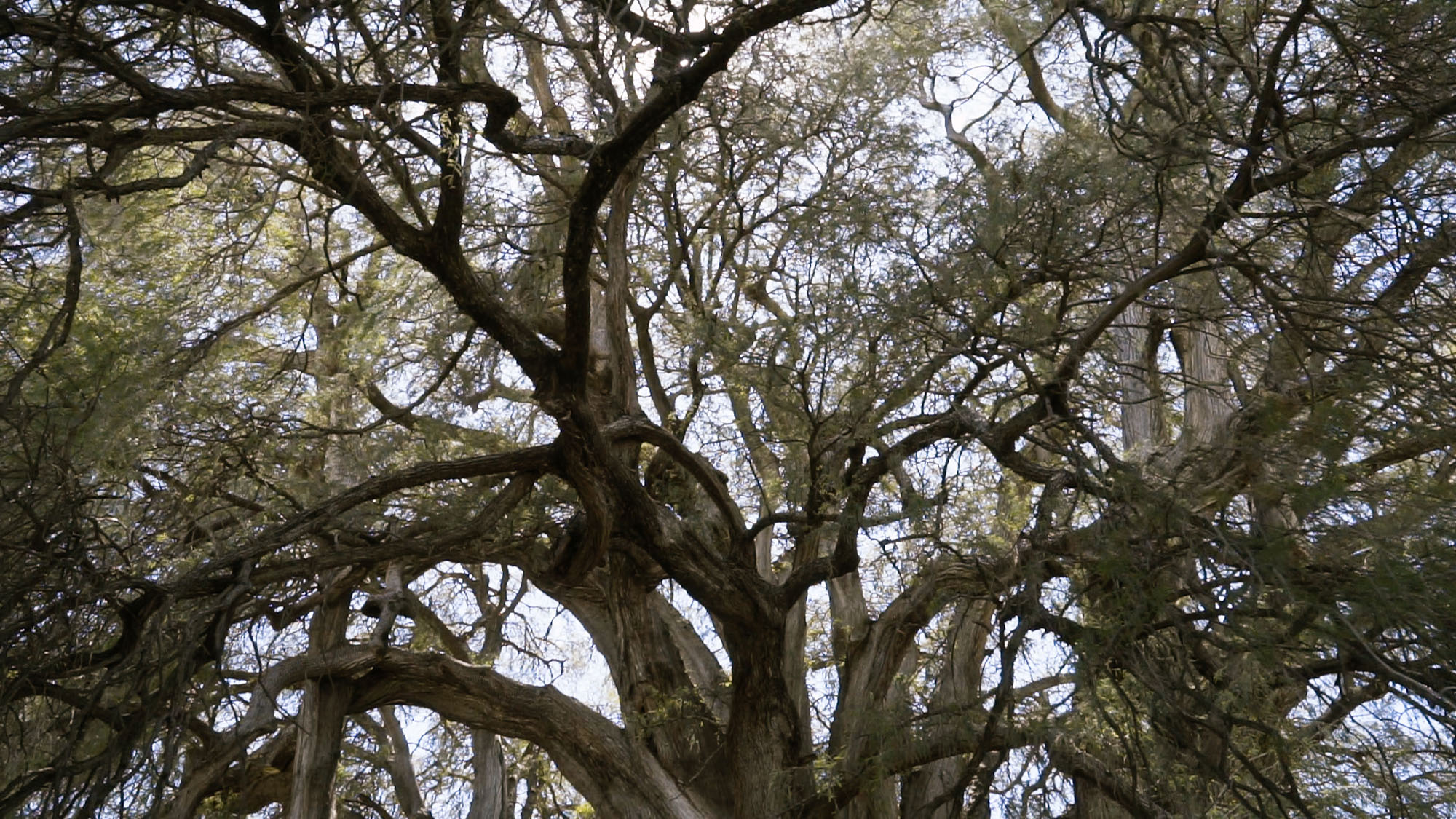

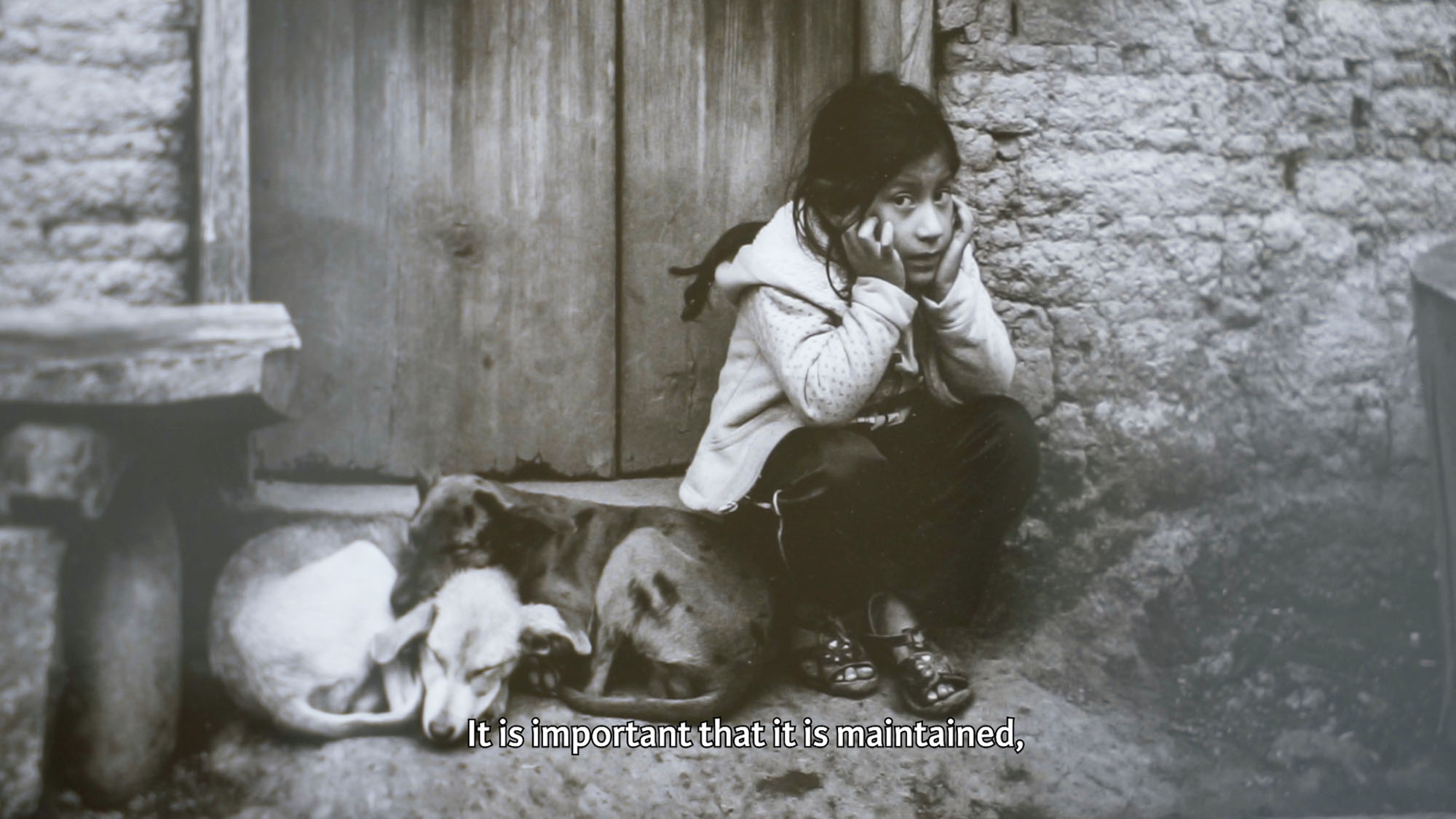
View of the group exhibition: Status in der Feldforschung (2), Foto Wien 2022, Paulusplatz 5, Vienna
Ansicht der Gruppenausstellung: Status in der Feldforschung (2), Foto Wien 2022, Paulusplatz 5, Wien
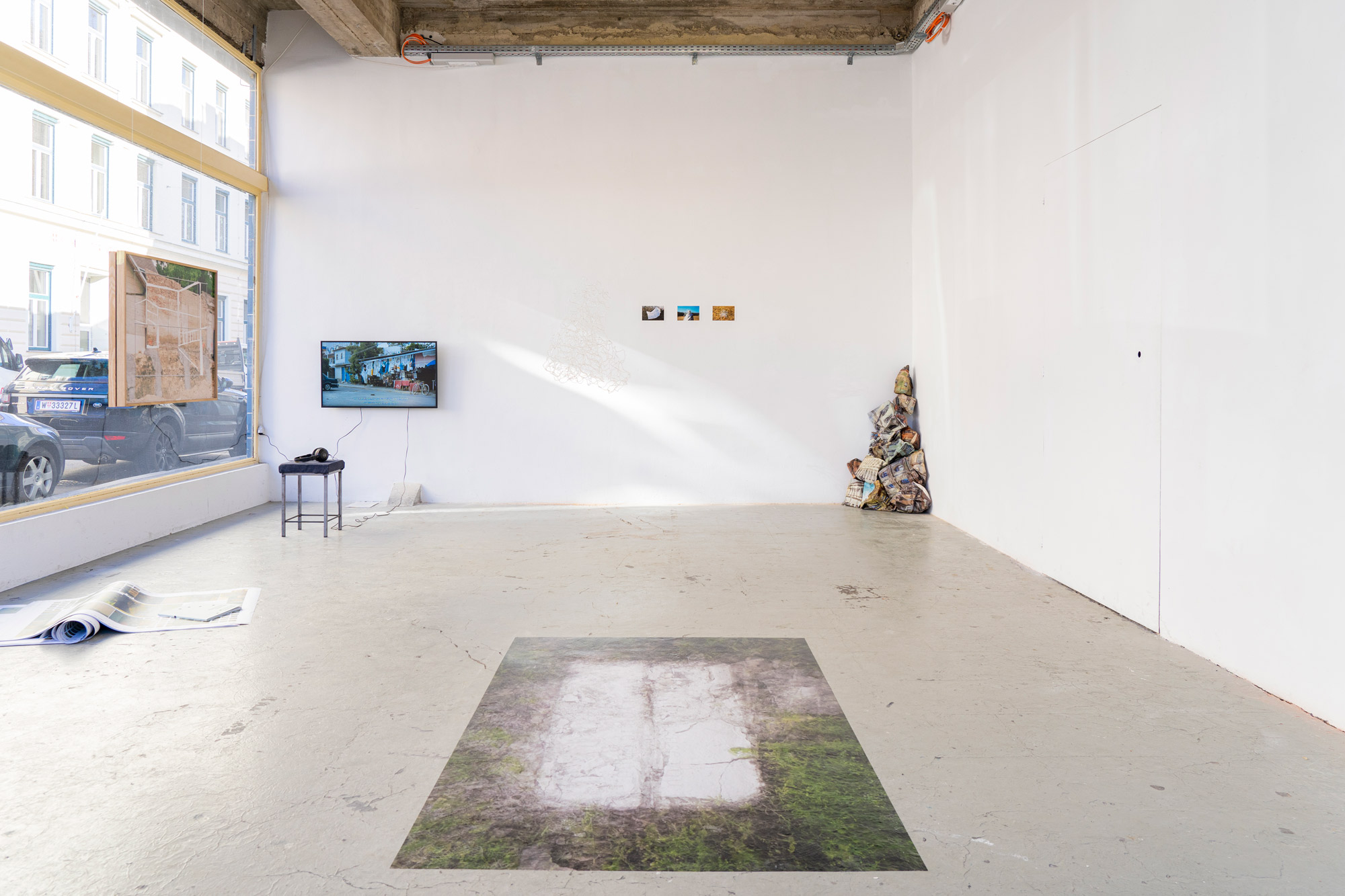
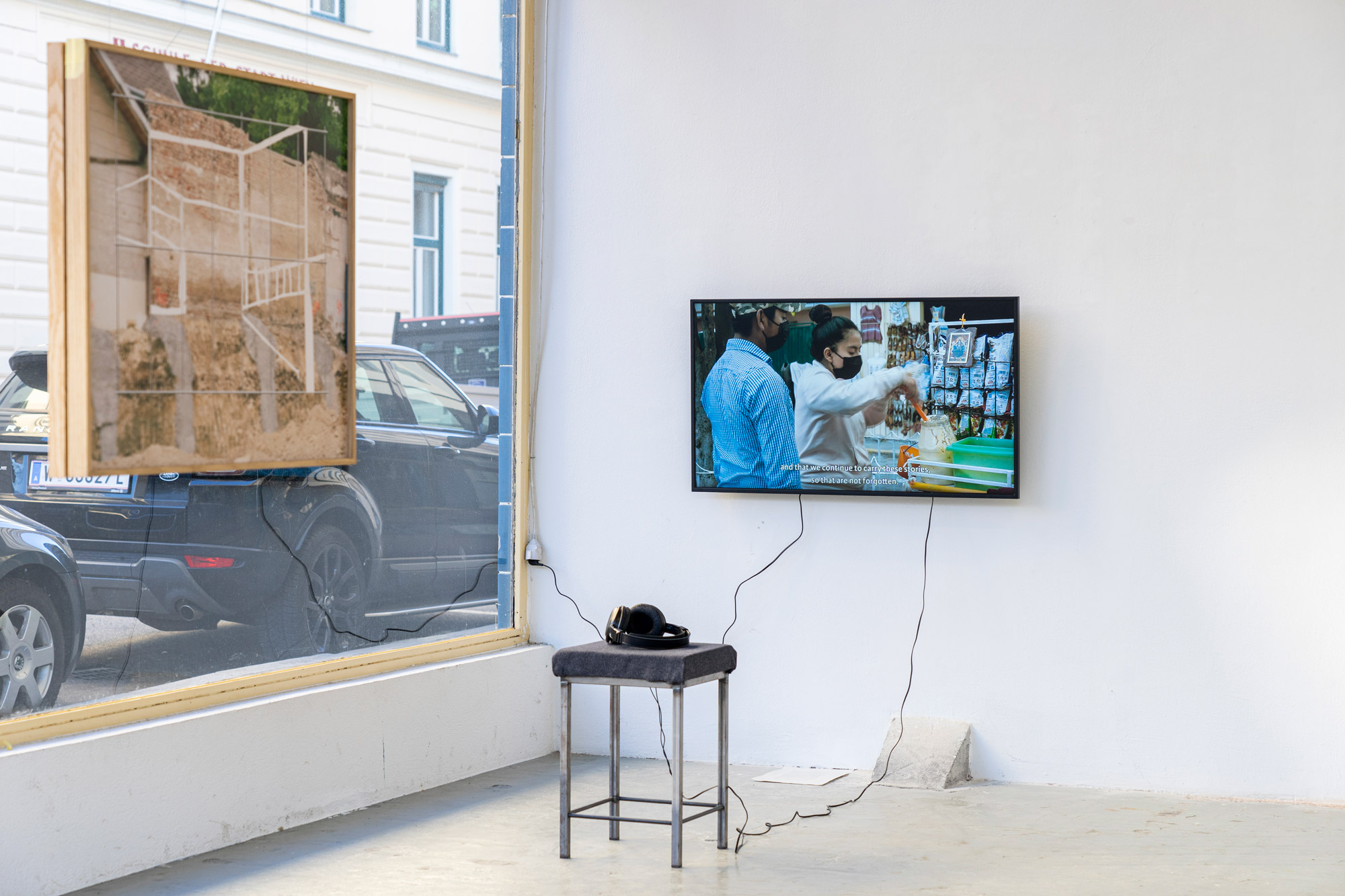
Photos by Raphael Reichl
Fotos von Raphael Reichl
I can't see the wood for the trees anymore
Installation: metal, plaster, wood, lithography, acrylic, 16 mm
frame, found objects
2021
The body has grown with roots and scars,
first open and abstract through grasping,
then direct and complex through pointing,
conclusions mark the flat surface.
Processes touch no depth,
trickle away in a stable tunnel with greedy gazes,
a manipulative imprint brands the whole mass,
without origin in thought,
without hold.
Profits without shame are propped up on
the actual true status symbol,
overburdened with material property,
the possession of one's naturalness branches off.
Installation view: Expositur Paulusplatz 5, University of Applied Arts, Vienna
Ich sehe den Wald vor lauter Bäumen nicht mehr
Installation: Metall, Gips, Holz, Lithographie, Acryl, 16 mm
Kader, Gefundene Objekte
Ausstellungsansicht: Expositur Paulusplatz, 1030 Wien
2021
Der Körper ist gewachsen mit Wurzeln und Narben,
zuerst offen und abstrakt durch das Greifen,
dann direkt und komplex durch das Zeigen,
Schlusszüge markieren die glatte Oberfläche.
Prozesse berühren keine Tiefe,
verrinnen im stabilen Tunnel mit gierigen Blicken,
brandmarkt ein manipulativer Abdruck die ganze Masse,
ohne Ursprung in den Gedanken, ohne Halt.
Profite ohne Schamgefühl stützen sich auf
das eigentliche Statussymbol,
überfordert mit materiellem Eigentum,
der Besitz der eigenen Natürlichkeit zweigt ab.
Ausstellungsansicht: Expositur Paulusplatz 5, Universität für angewandte Kunst, Wien
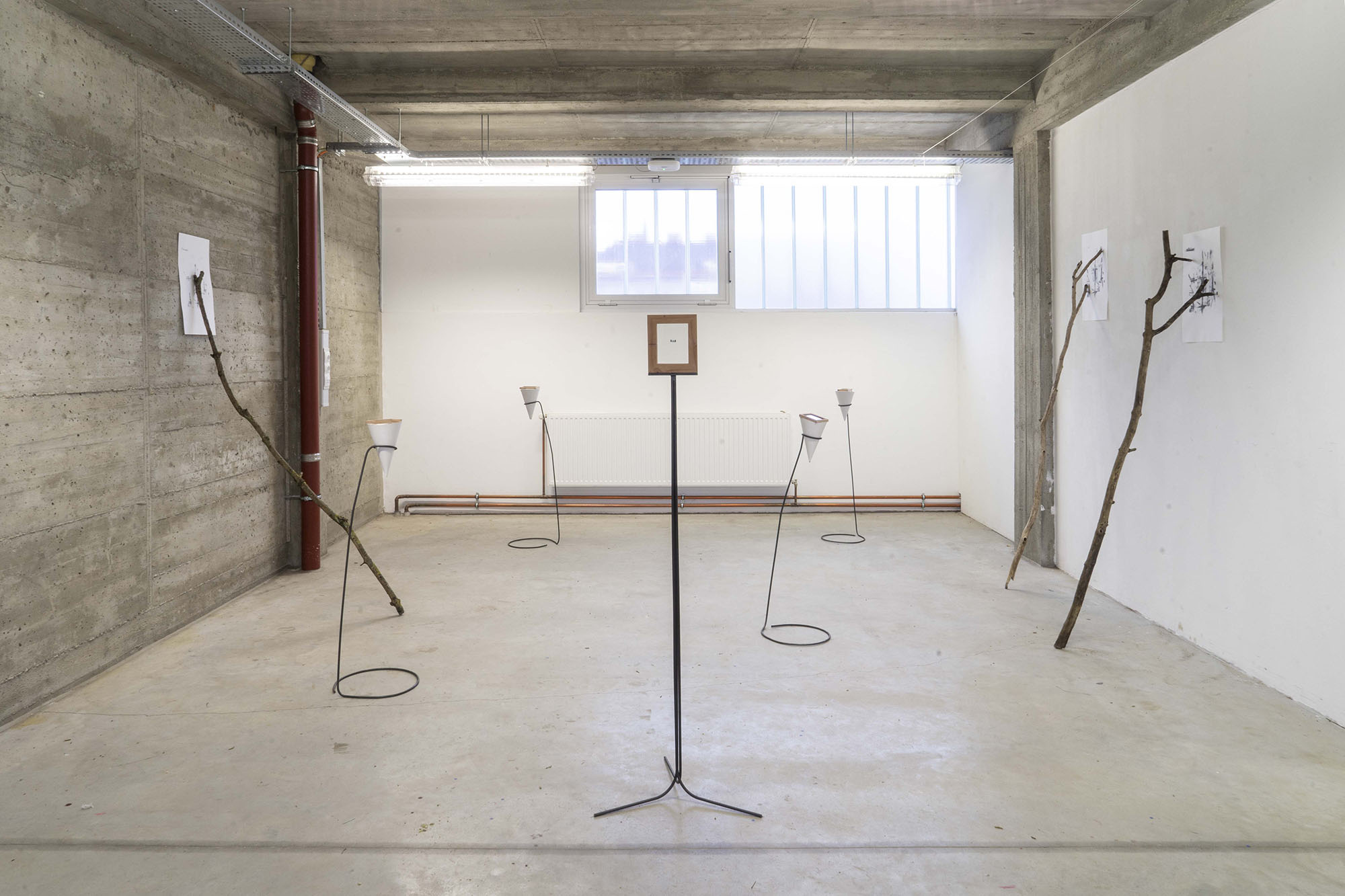
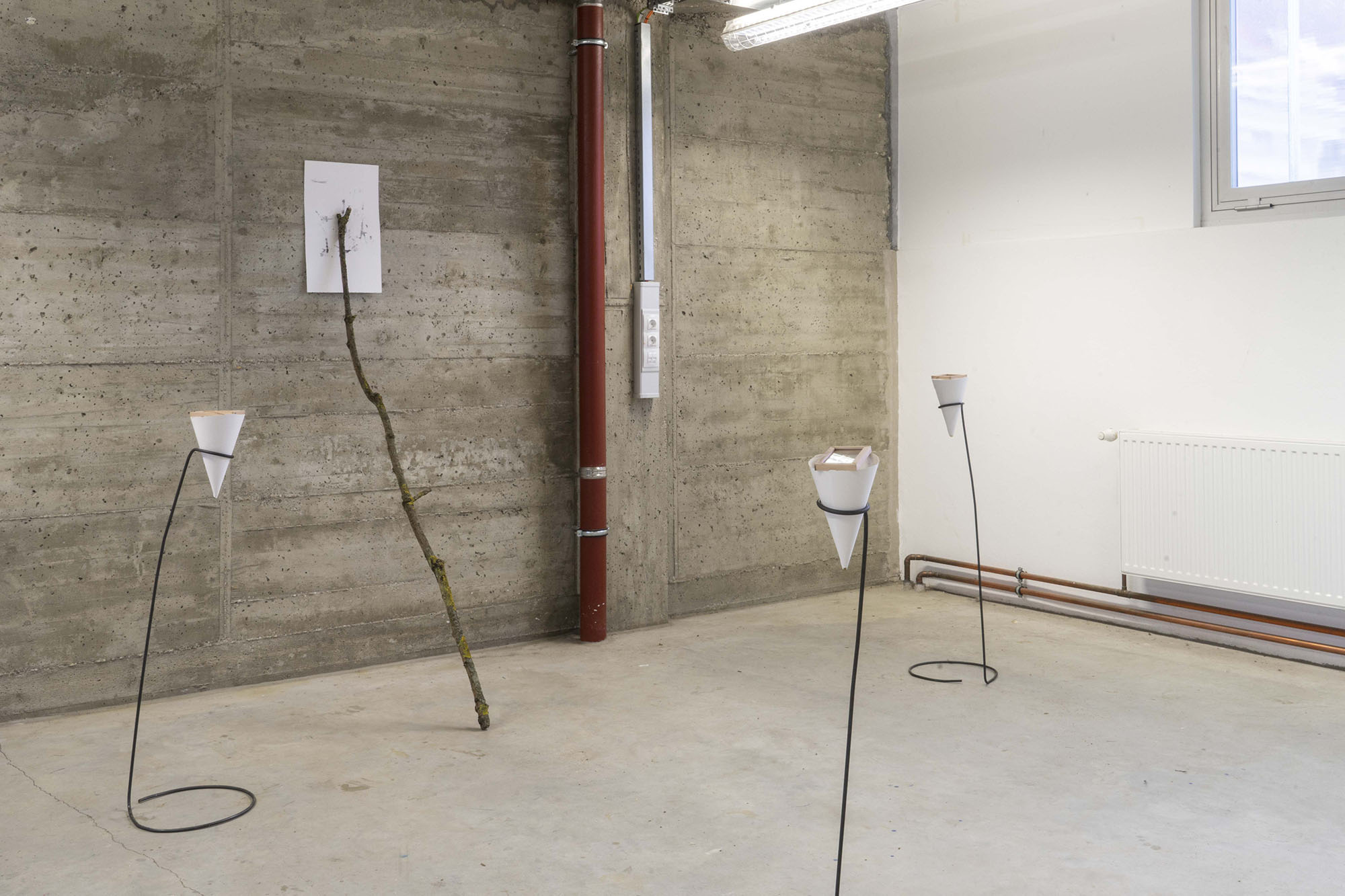
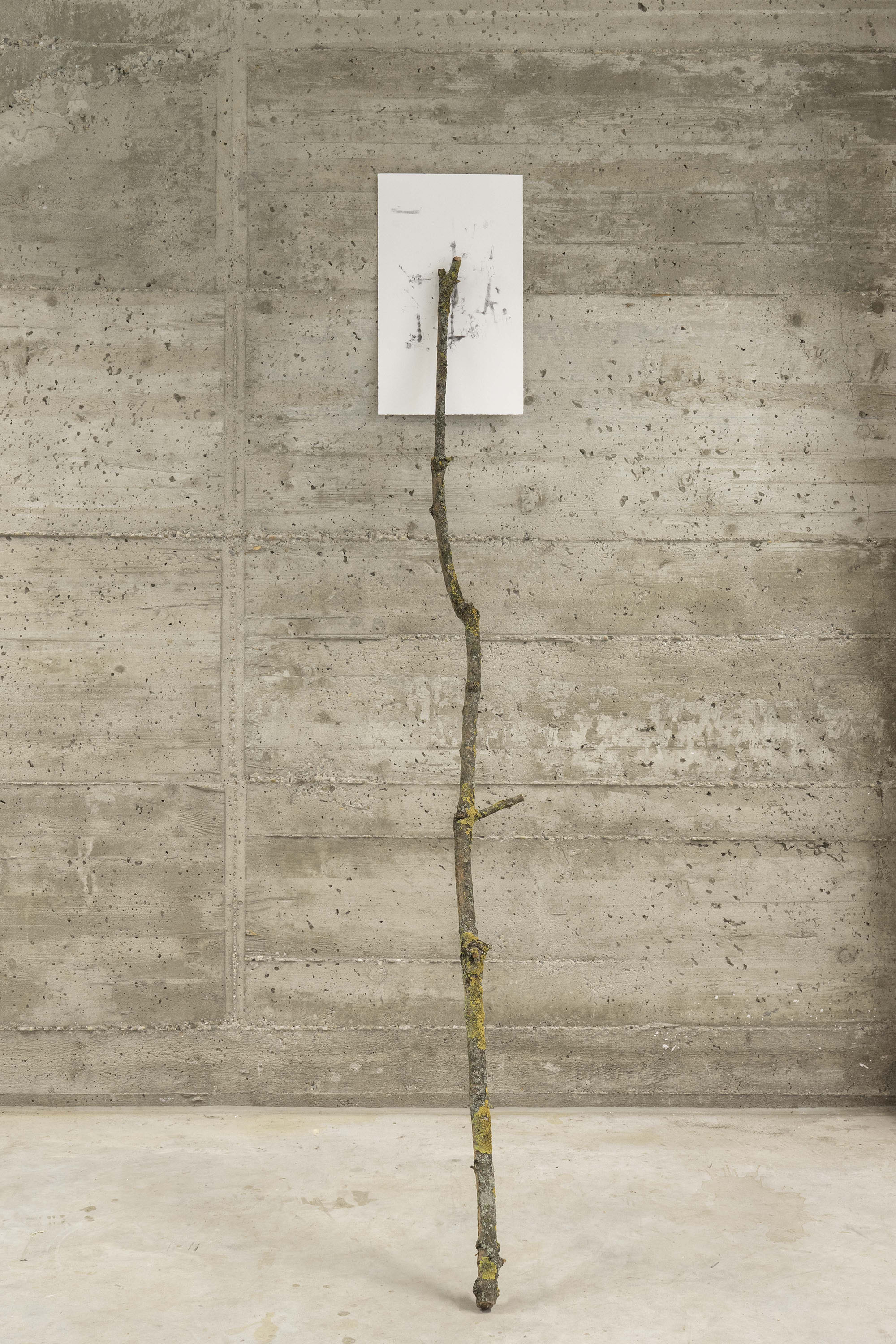
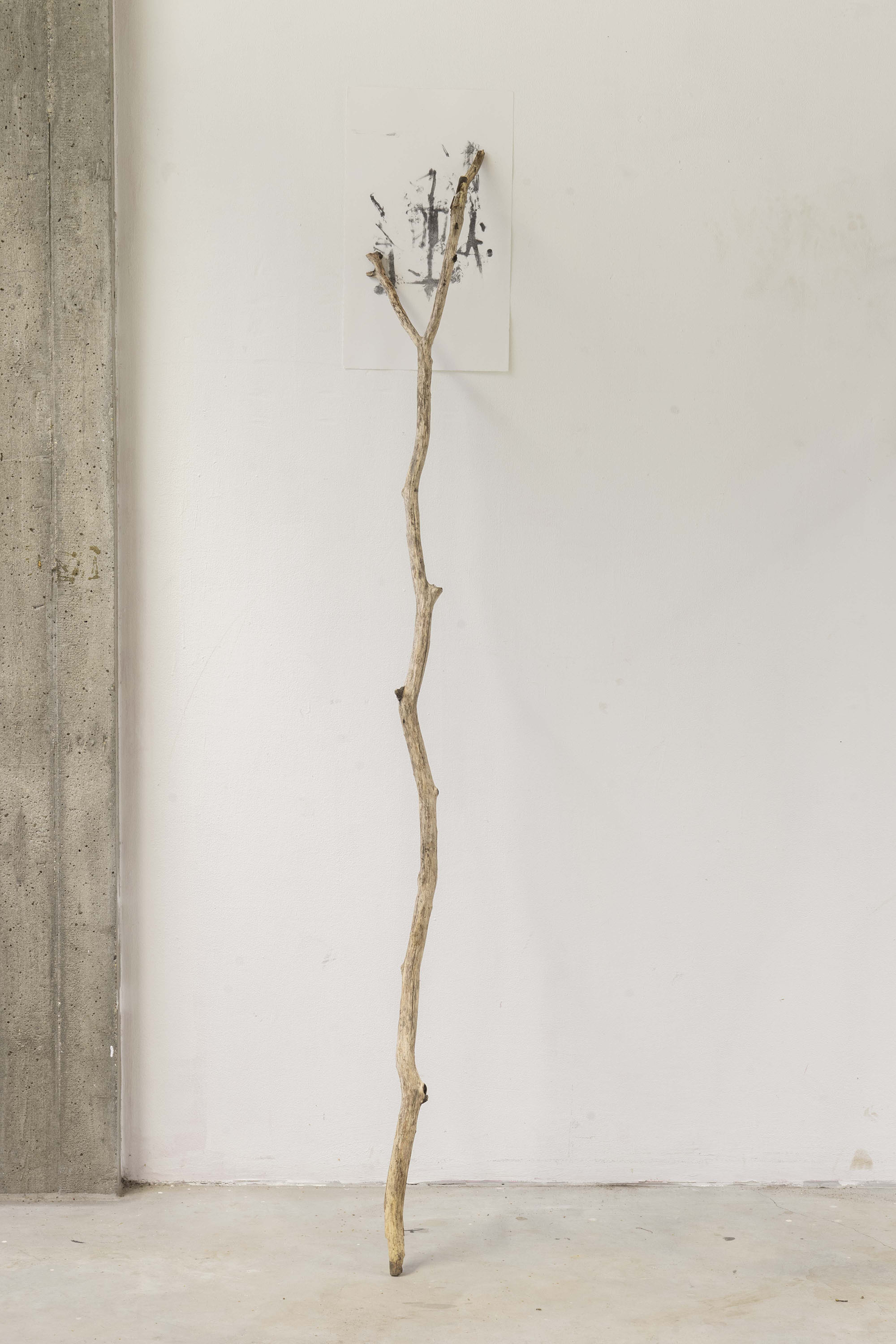
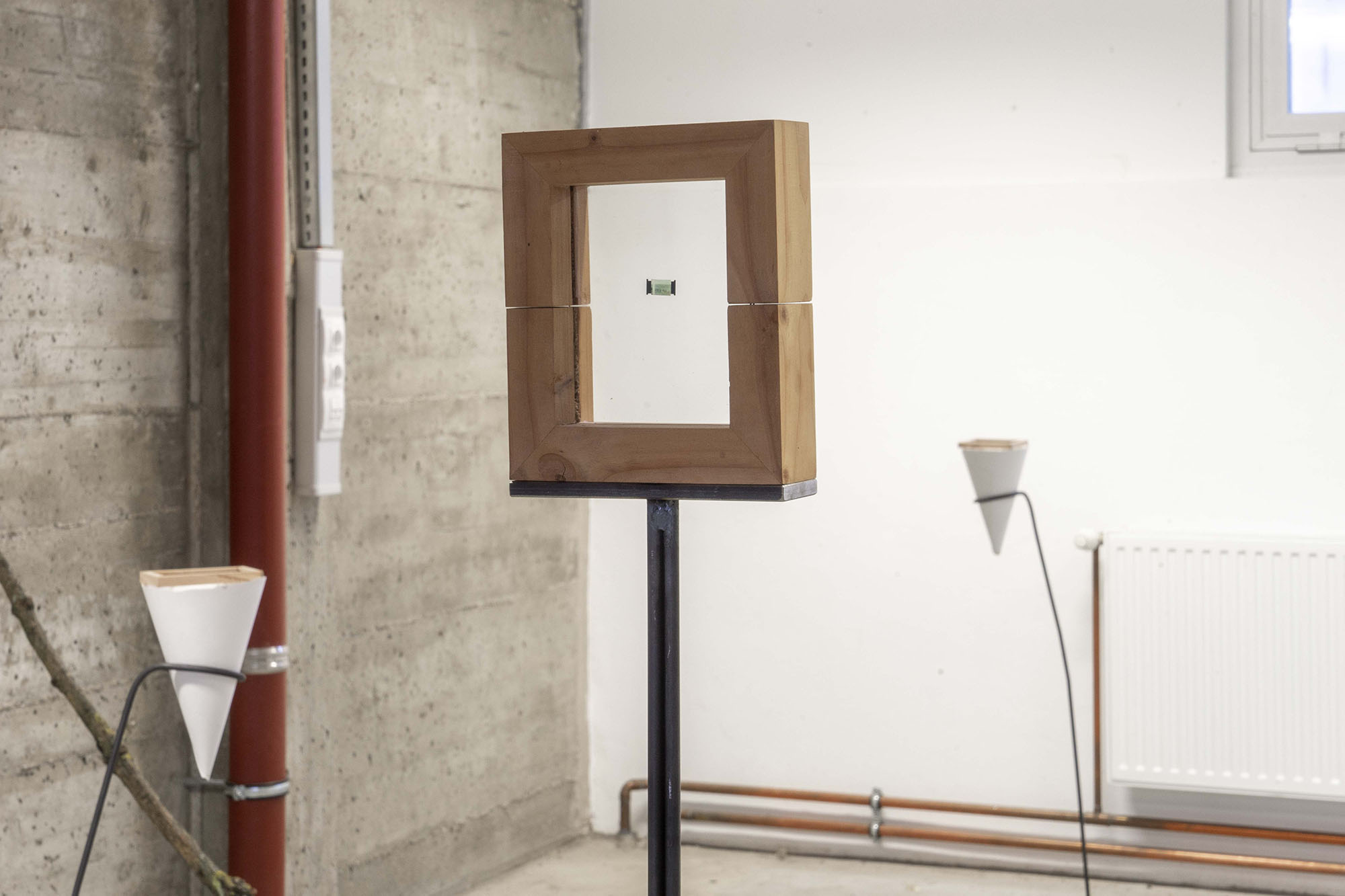
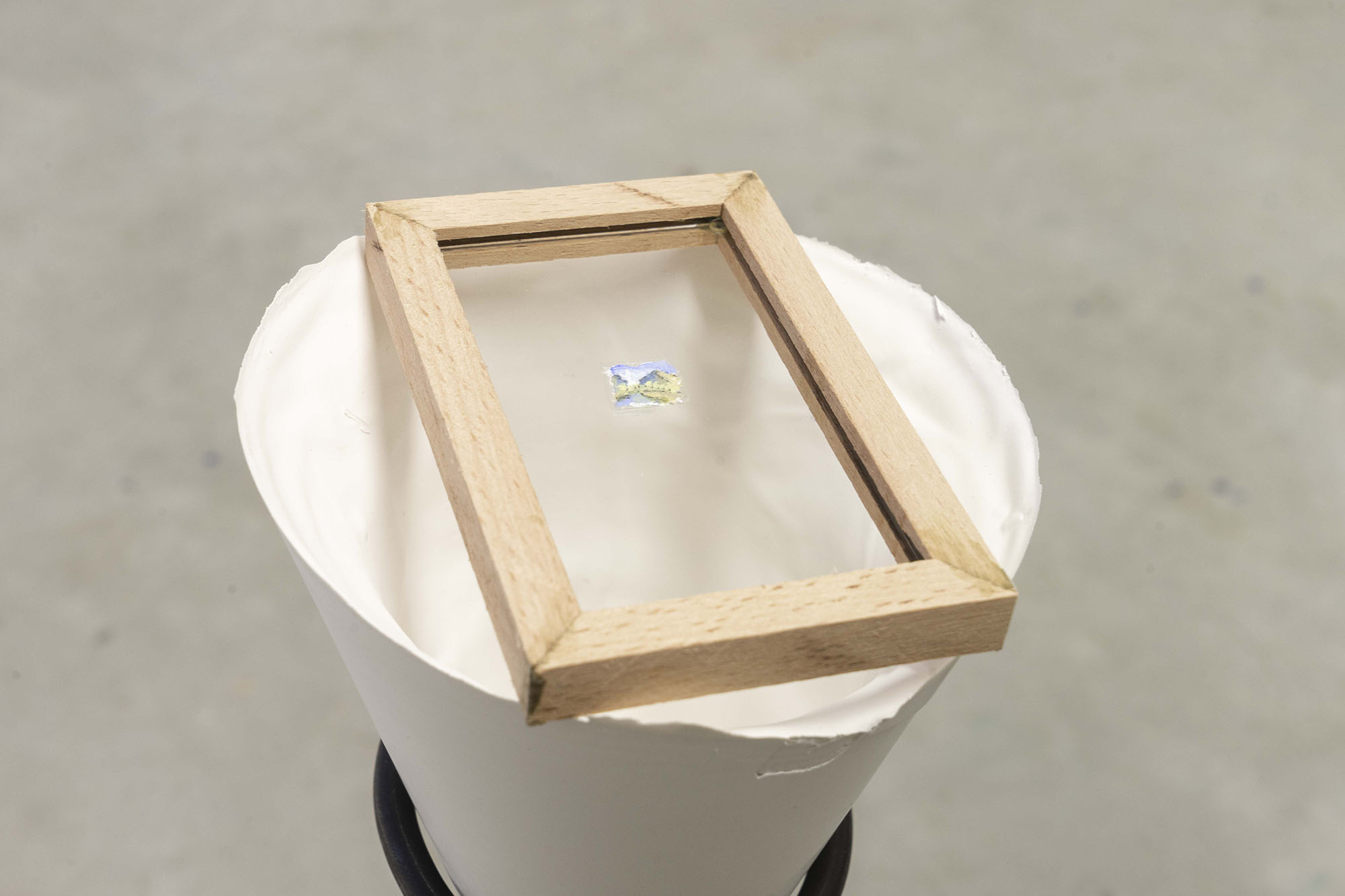
Photos by Raphael Reichl
Fotos von Raphael Reichl
P.A.H. (Sweden Aid)
City-Light-Poster, digital color print, 118.5 × 175 cm
Video (16 mm to digital), color, sound, 1 min
2019
A humorous to ironic connection evolves in the collages of Raphael Reichl, who combines the context of origin of the Per-Albin-Hansson housing estate with the history of the Austrian sweet Schwedenbomben (Swedish bombs). By interweaving two such specific and seemingly alien elements, which he projects onto the housing estate, he breaks up historical narratives. The fragmented filmic material questions reality, documentation and transmission.
(written by Clara Hofmann)
Exhibition view: IM VORBEI, Per-Albin-Hansson-Siedlung Ost:
Bergtaidingweg, Vienna
during the project of Per Albin initiated by Doris Krüger and Ilse
Lafer with KÖR Vienna, curated by Clara Hofmann
P.A.H. (Schwedenhilfe)
City-Light-Poster, Digitaldruck, 118,5 × 175 cm
Video (16mm Scan), Farbe, Ton, 1 min
2019
Eine humorvolle bis ironische Verbindung entsteht in den Collagen von Raphael Reichl, der den Entstehungskontext der Siedlung Per-Albin-Hansson mit der Geschichte der österreichischen Süßigkeit Schwedenbomben verknüpft. Anhand der Verschränkung zweier derart spezifischer und sich so fremd scheinender Elemente, die er auf die Siedlung projiziert, bricht er historische Narrative auf. Das zersprengte filmische Material hinterfragt Wirklichkeit, Dokumentation und Überlieferung.
(Text von Clara Hofmann)
Ausstellungsansicht: IM VORBEI, Per-Albin-Hansson-Siedlung Ost:
Bergtaidingweg, 1100 Wien
Im Rahmen des Ausstellungsprojekts Per Albin von Doris Krüger und
Ilse Lafer in Zusammenarbeit mit KÖR, kuratiert von Clara Hofmann
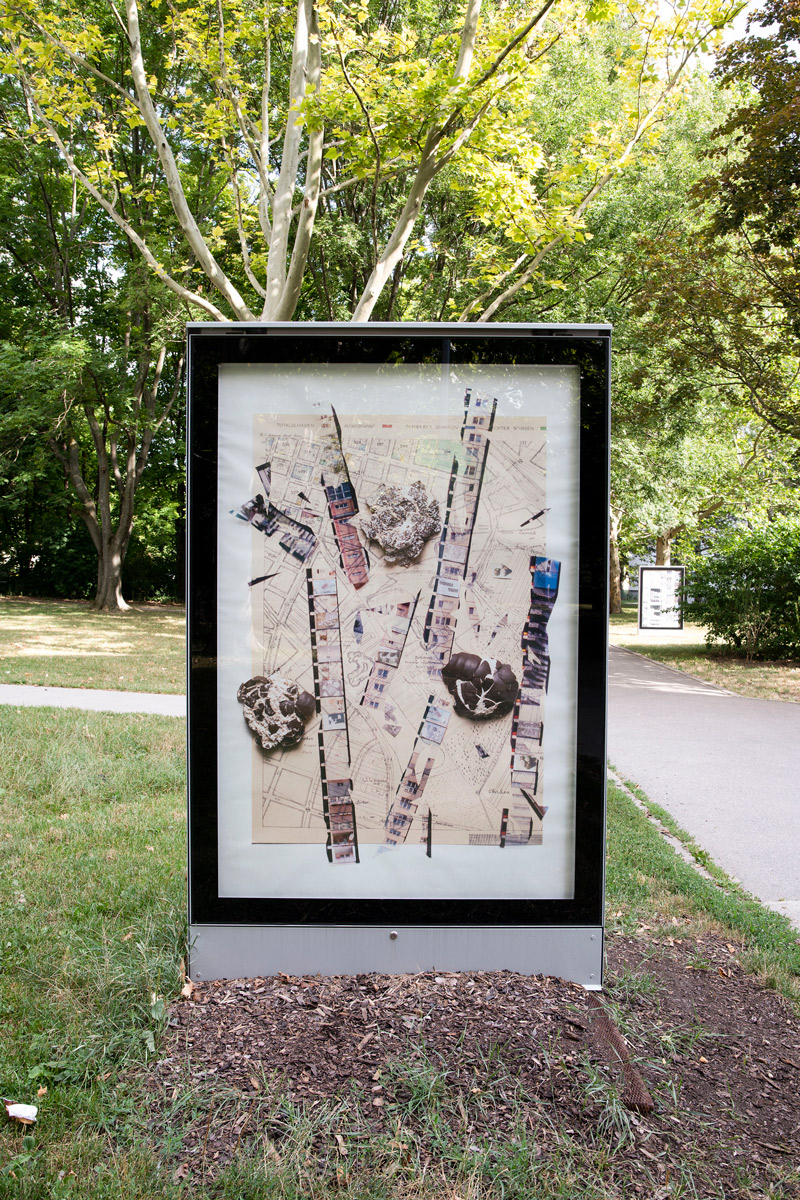

Photos by Mira Klug
Fotos von Mira Klug
The Erased Brain, Just The Apparatus
Installation: Styrofoam, putty, wire, steel, MDF, electronic
mechanics
2019
Technical support
Arno Gitschthaler and Felix Huber
The Erased Brain is an installation of kinetic sculptures that basically represent mechanisms in geometric form. Starting from the question of what truth means, autonomous bodies move in space. Time is a sensation of its own, like an autonomous being. Raphael Reichl tries to depict the natural law of being by using geometric bodies. To what extent can humans accurately describe the present? On the other side, of observation, there is the additional question of how precisely we can observe?
The rotating cones show a simultaneity and parallelism in an endless movement. The cuboid sculpture performs a movement of lifting and dropping and represents the phenomenon of gravity as well as a transmission of an impulse or a moment. These mechanisms can also be understood as a metaphor of film production—like shooting and cutting. Thus, the manipulation of space and time begins with human intervention.
Installation view: Expository Paulusplatz 5, University of Applied
Arts, Vienna
with works by Ana Likar (on the wall)
Das ausgelöschte Gehirn, die simple Apparatur
Installation: Styropor, Spachtelmasse, Draht, Stahl, MDF,
elektronische Mechanik
2019
Technische Unterstützung
Arno Gitschthaler and Felix Huber
Das ausgelöschte Gehirn ist eine Installation von kinetischen Skulpturen, die grundsätzlich Mechanismen in geometrischer Form darstellen. Ausgehend von der Fragestellung was Wahrheit bedeutet, bewegen sich autonome Körper im Raum. Zeit ist ein eigenes Empfinden, wie ein autonomes Wesen. Raphael Reichl versucht anhand geometrischer Körper die Naturgesetzlichkeit des Seins darzustellen. Inwieweit können Menschen die Gegenwart genau beschreiben? Auf der anderen Seite, des Betrachtens, kommt zusätzlich die Frage auf, wie genau wir beobachten können?
Die rotierenden Kegel zeigen eine Simultanität und Parallelität in einer endlosen Bewegung. Die Quader-Skulptur vollführt eine Bewegung des Hochhebens und Fallenlassens und stellt das Phänomen der Schwerkraft sowie die Übertragung eines Impuls oder Moments dar. Diese Mechanismen sind auch als Metapher der Filmproduktion zu verstehen – das Drehen und Schneiden. So beginnt mit dem Eingreifen des Menschen die Manipulation von Raum und Zeit.
Installationsansicht: Expositur Paulusplatz 5, Universität für
angewandte Kunst, Wien
mit Arbeiten von Ana Likar (an der Wand)
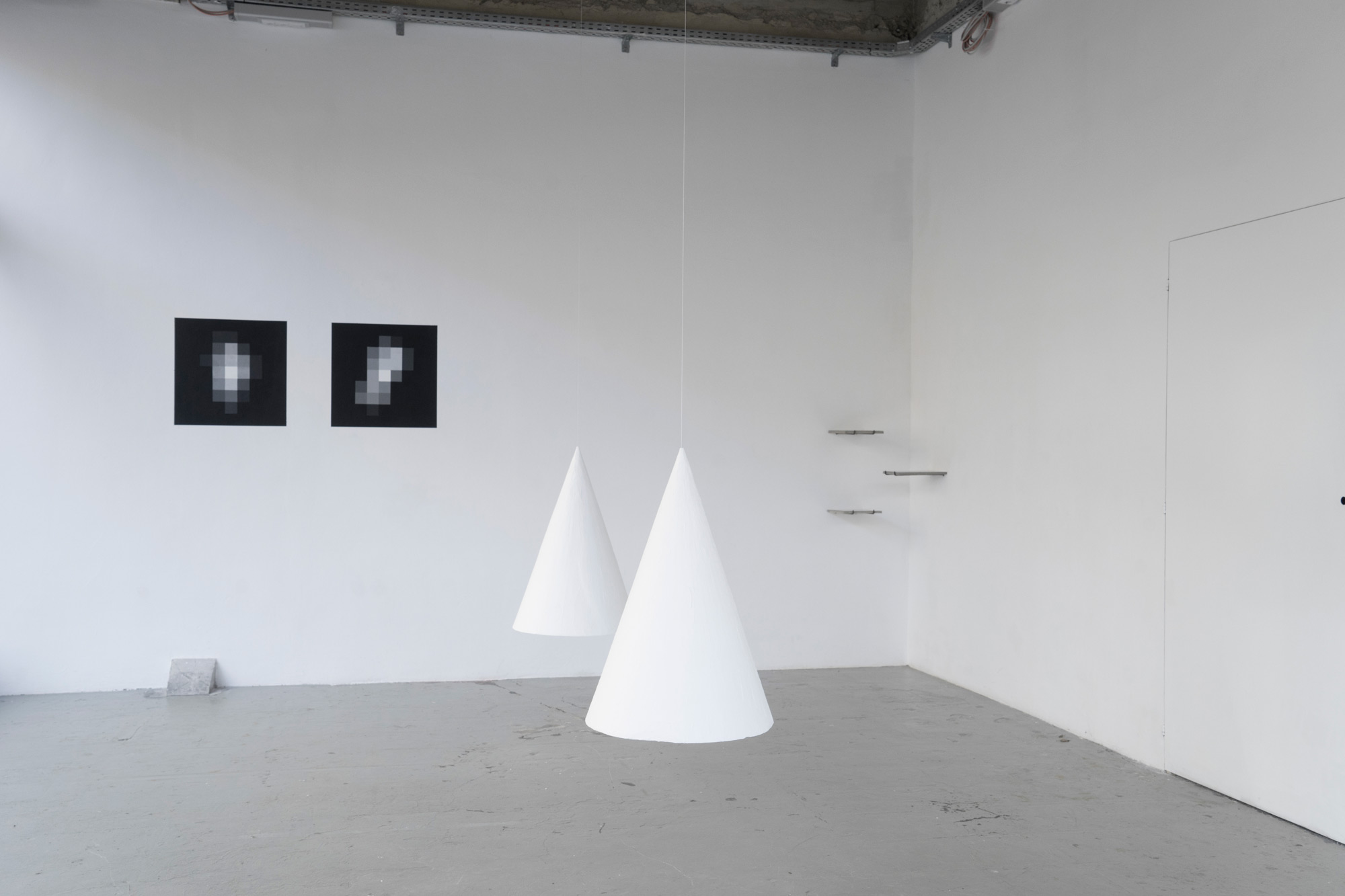
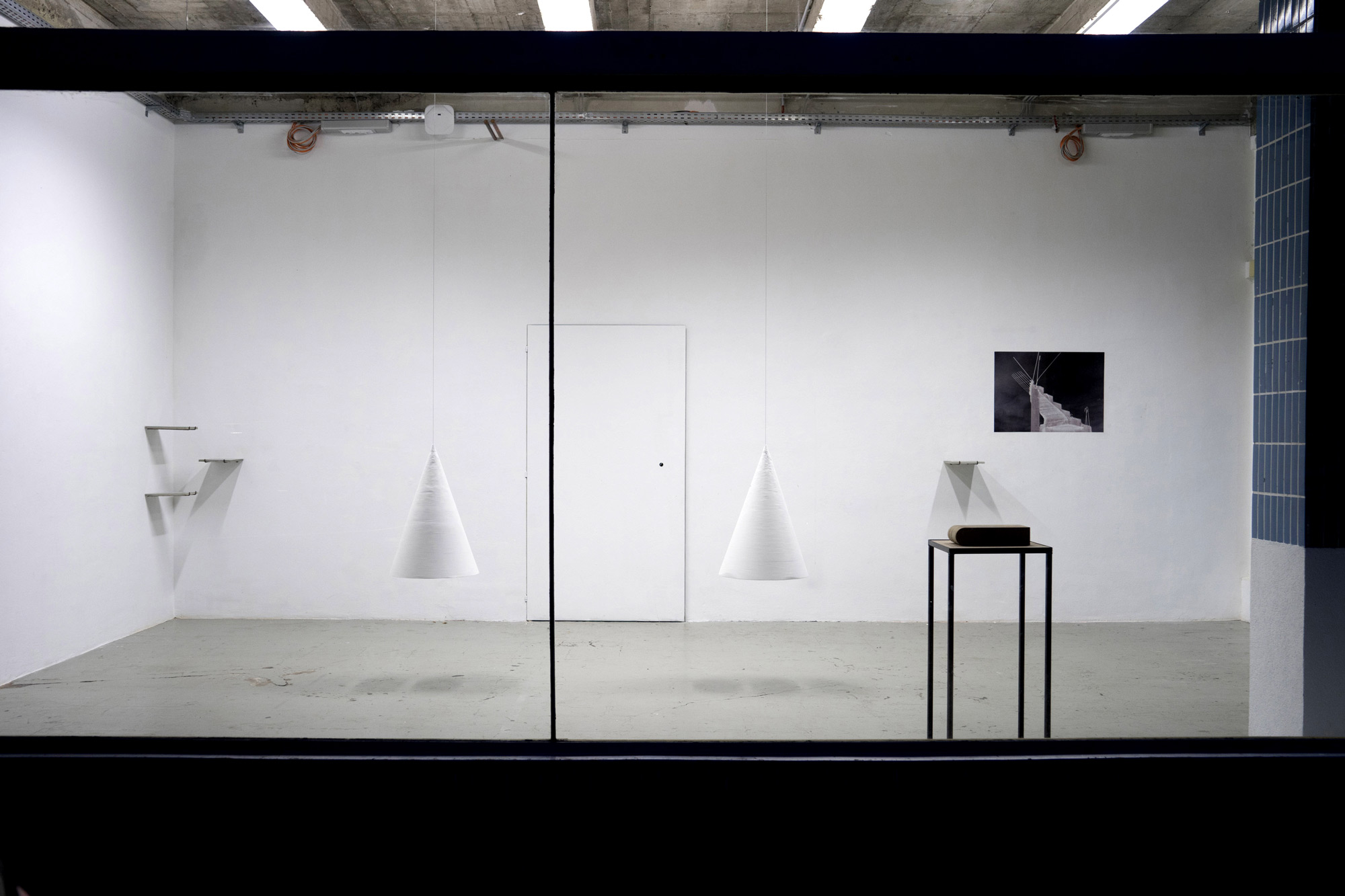

Photos by Raphael Reichl
Fotos von Raphael Reichl
revolvere
Installation: 16 mm projector, 16 mm film, b/w, silent, 9 sec
(Loop)
iPhone 7, video, colour, silent, 5 min (Loop)
2018
In April 2018, the social situation in Nicaragua escalated due to countless shared accusations on social media channels of public crimes and murders. Protest movements were organised against Daniel Ortega's authoritarian system of government. It was not only a political conflict between the government and the demonstrators on the streets, it became also a political debate due social media around the globe, when turbulent emotions were posted at a high speed in the virtual space. How much truth remains between cries for help and agitation? And, coming from the so-called global north, how can I deal with all this information?
In the installation revolvere, Raphael Reichl questions the concept of revolution and symbolises the etymology in a comparison of image-reproducing apparatuses of their technical evolution. If in the 15th century revolution used to mean literally circling and later, only from the time of the French Revolution, violent political coup, then the connotation of the word has changed significantly from a circular to a more linear process. What political challenges does Western society face in crises when our understanding of revolution is always associated with radical changes and steady linear growth?
The machines move parallelly in their presence—in time with the revolution—progress or repetition of interchangeable rulers?
Installation view: Shifting Sites: Activate the Territories, Expository Paulusplatz 5, University of Applied Arts, Vienna
revolvere
Installation: 16mm Projektor: 16 mm, b/w, silent, 9 sek (Loop)
iPhone 7: Video, digital, colour, silent, 5 min (Loop)
2018
Im April 2018 eskalierte die soziale Lage in Nicaragua aufgrund von unzähligen geteilten Beschuldigungen auf Social-Media-Kanälen von öffentlichen Verbrechen und Morden. Es wurden Protestbewegungen gegen das autoritäre Regierungssystem von Daniel Ortega organisiert. Zwischen der Regierung und der Demonstrierenden entstand nicht nur ein politischer Konflikt auf den Straßen, sondern es entwickelten sich gesellschaftliche Symptome aufgrund der sozialen Kanäle in der digitalen Welt, wenn aufgeladene Emotionen von Posts sich in einer Hochgeschwindigkeit im virtuellen globalen Raum aufbauschen. Wie viel Wahrheit bleibt zwischen Hilferufe und Hetze über? Und, wie soll ich, aus dem sogenannten globalen Norden kommend, mit all der Information umgehen?
In der Installation revolvere hinterfragt Raphael Reichl den Begriff der Revolution und versinnbildlicht die Etymologie in einer Gegenüberstellung von bildreproduzierenden Medien in ihrer technischen Evolution. Wenn Revolution früher im 15. Jh. wortwörtlich umkreisen hieß und später erst ab dem Zeitpunkt der französischen Revolution gewaltsamer politsicher Umsturz, dann verändert sich die Konnotation des Wortes von einer zyklischen in eine linear fortschreitende Bedeutung. Welchen politischen Herausforderungen stellt sich der moderne westliche Mensch in Krisen, wenn unser Verständnis von Revolution immer mit Umbruch und stetigen linearen Wachstum verbunden ist?
Die Maschinen bewegen sich parallel in ihrer Präsenz – im Takt der Revolution – Fortschritt oder Wiederholung von austauschbaren Machthabern?
Ausstellungsansicht: Shifting Sites: Activate the Territories, Expositur Paulusplatz 5, Universität für angewandte Kunst, Wien
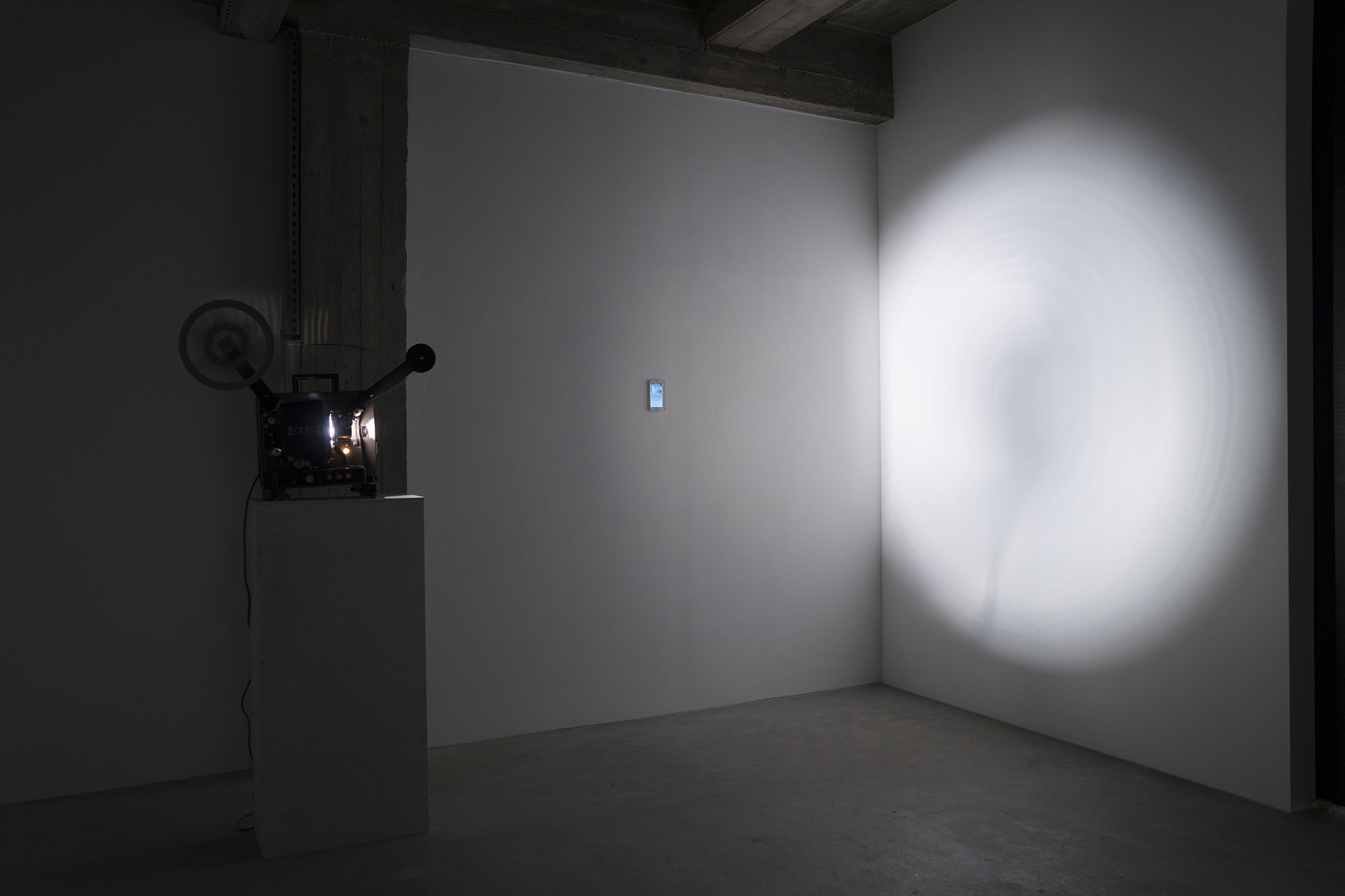
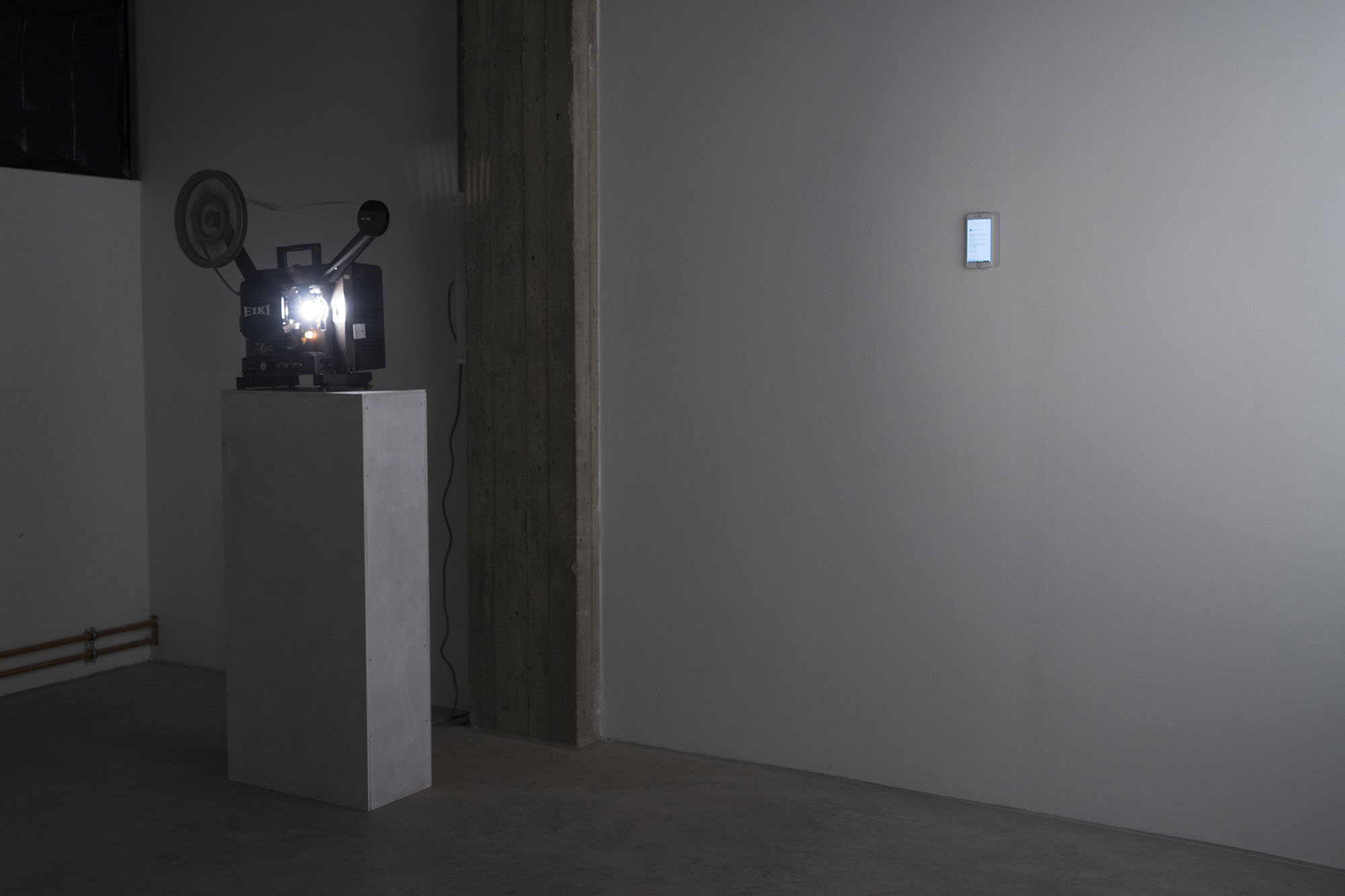
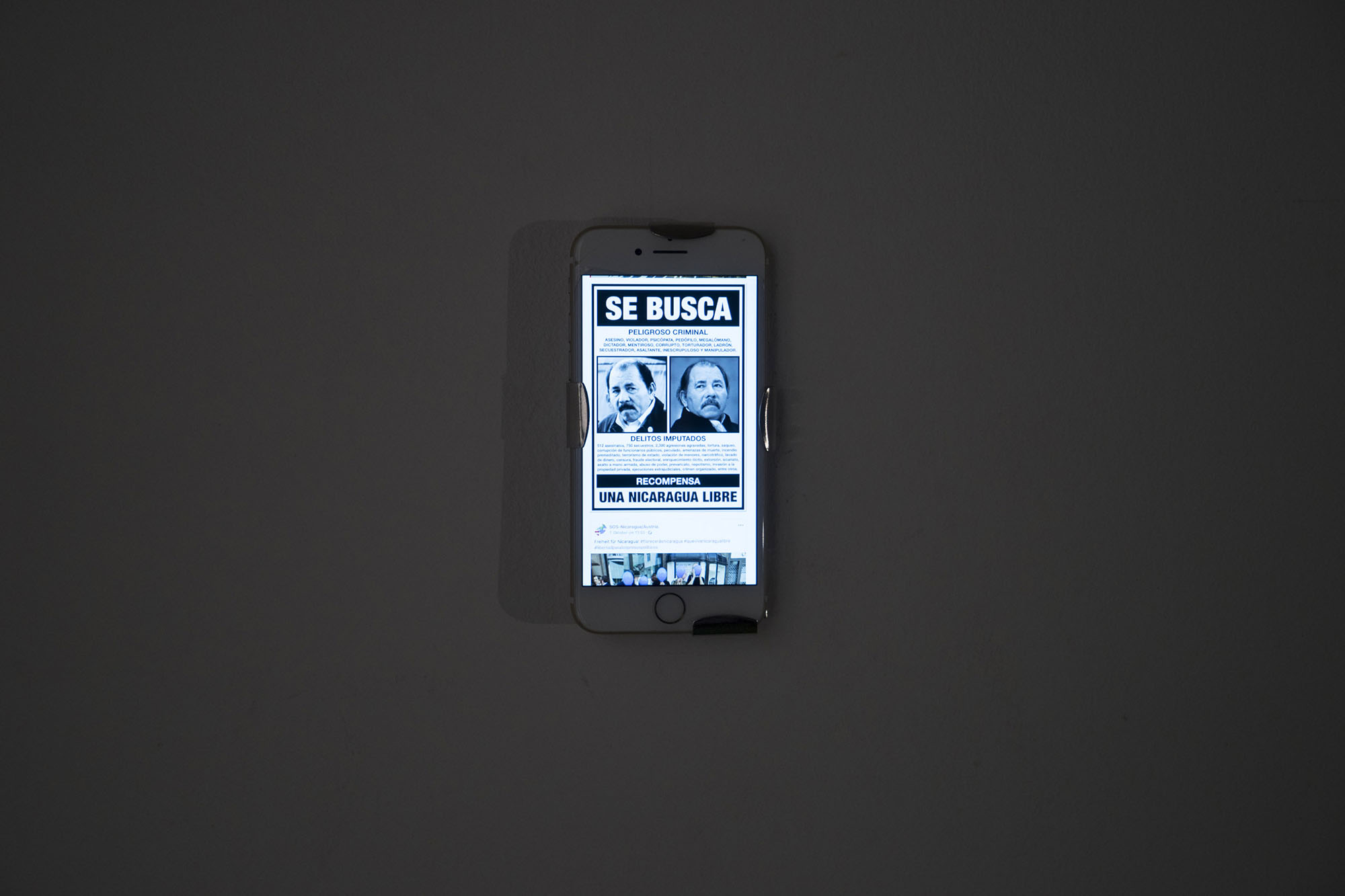
Photos by Raphael Reichl
Fotos von Raphael Reichl
Red Green Birth
Film installation: aluminium, 16 mm projector
Film: 16 mm, colour, silent, 1 min (loop)
2018
Exhibition view: Kulturverein Shizzle, Hernalser Hauptstraße 37, 1170 Vienna
Rot Grün Geburt
Filminstallation: Aluminium, 16 mm Projektor
Film: 16 mm, Farbe, stumm, 1 min (Loop)
2018
Ausstellungsansicht: Kulturverein Shizzle, Hernalser Hauptstraße 37, 1170 Wien
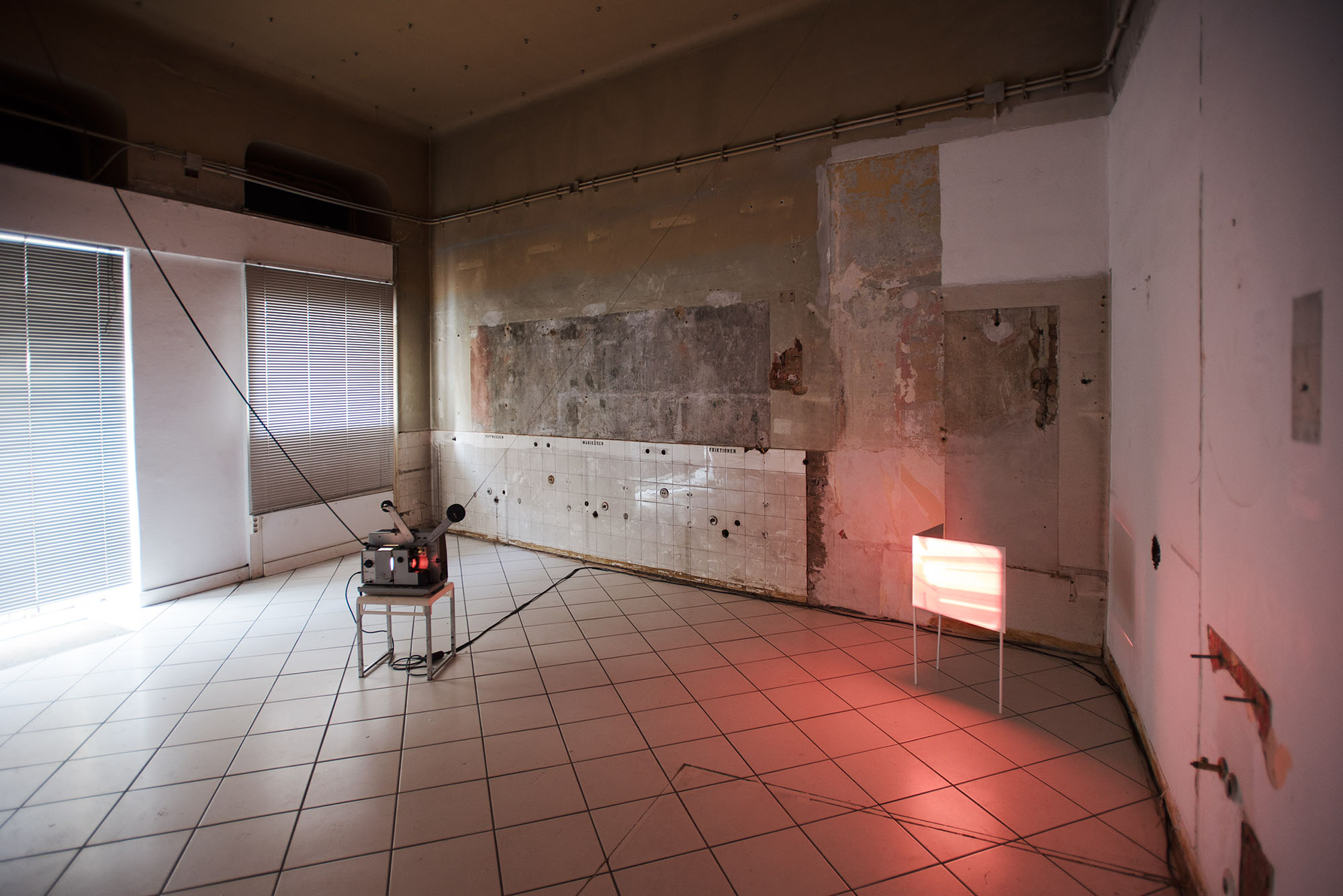
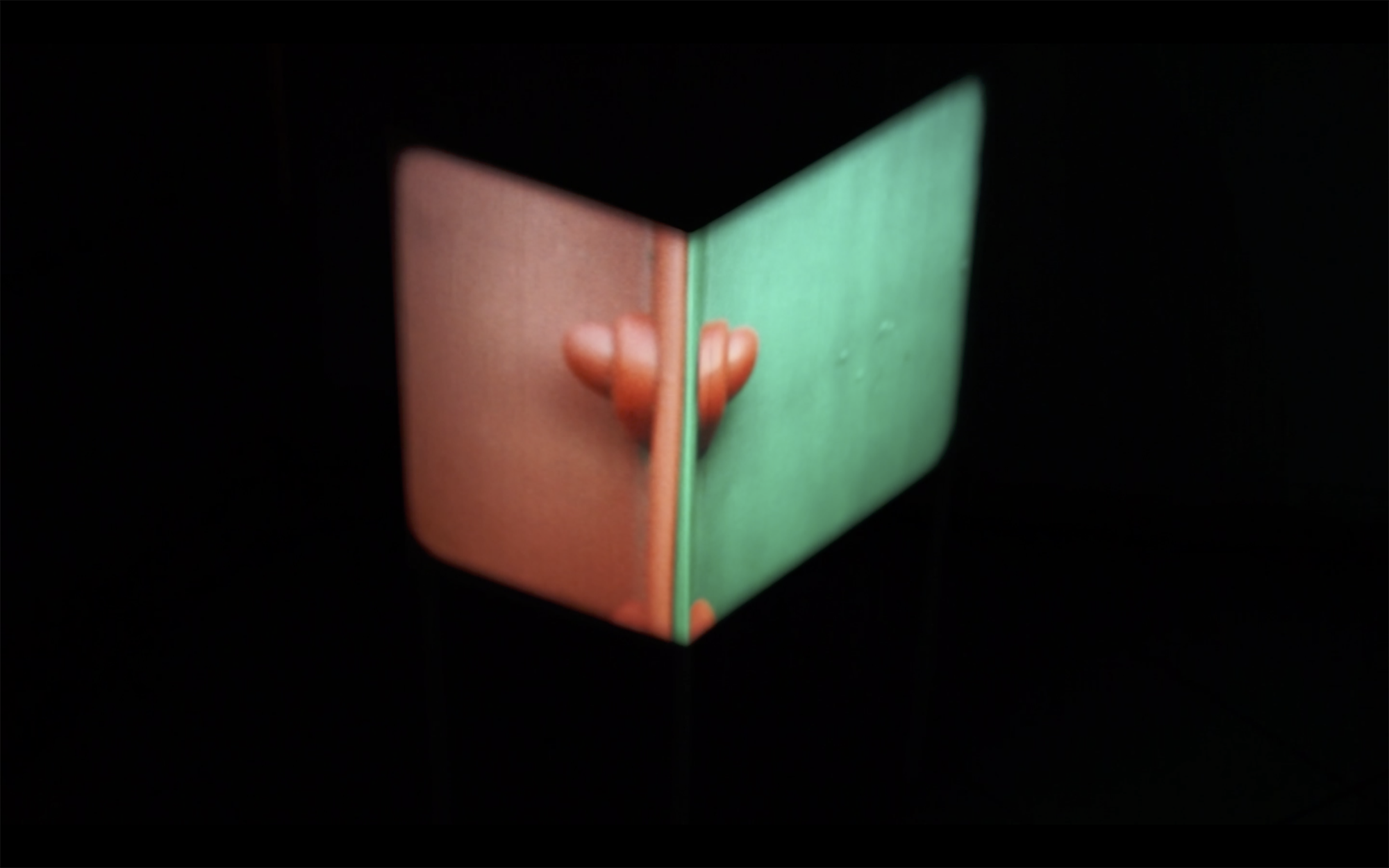
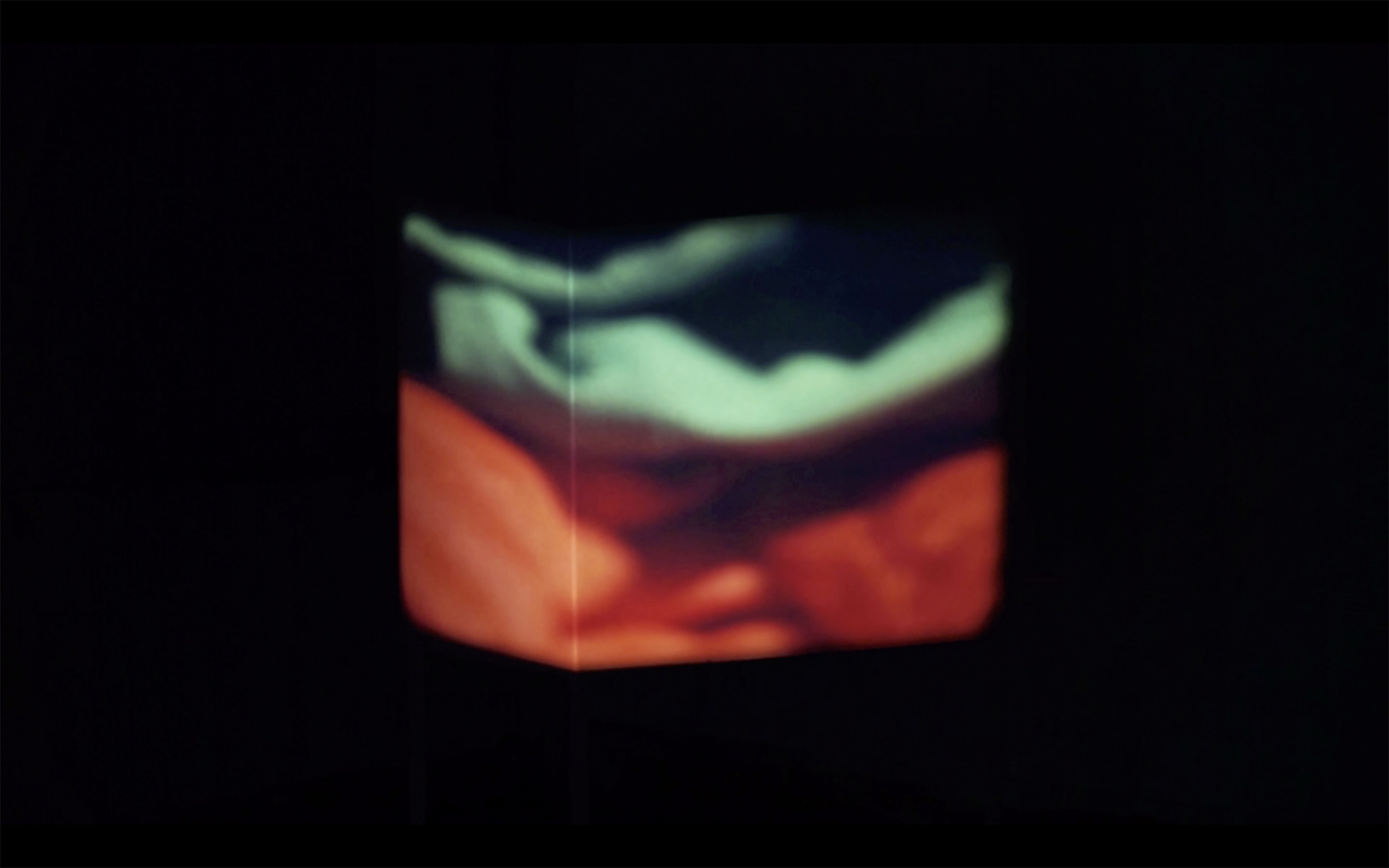
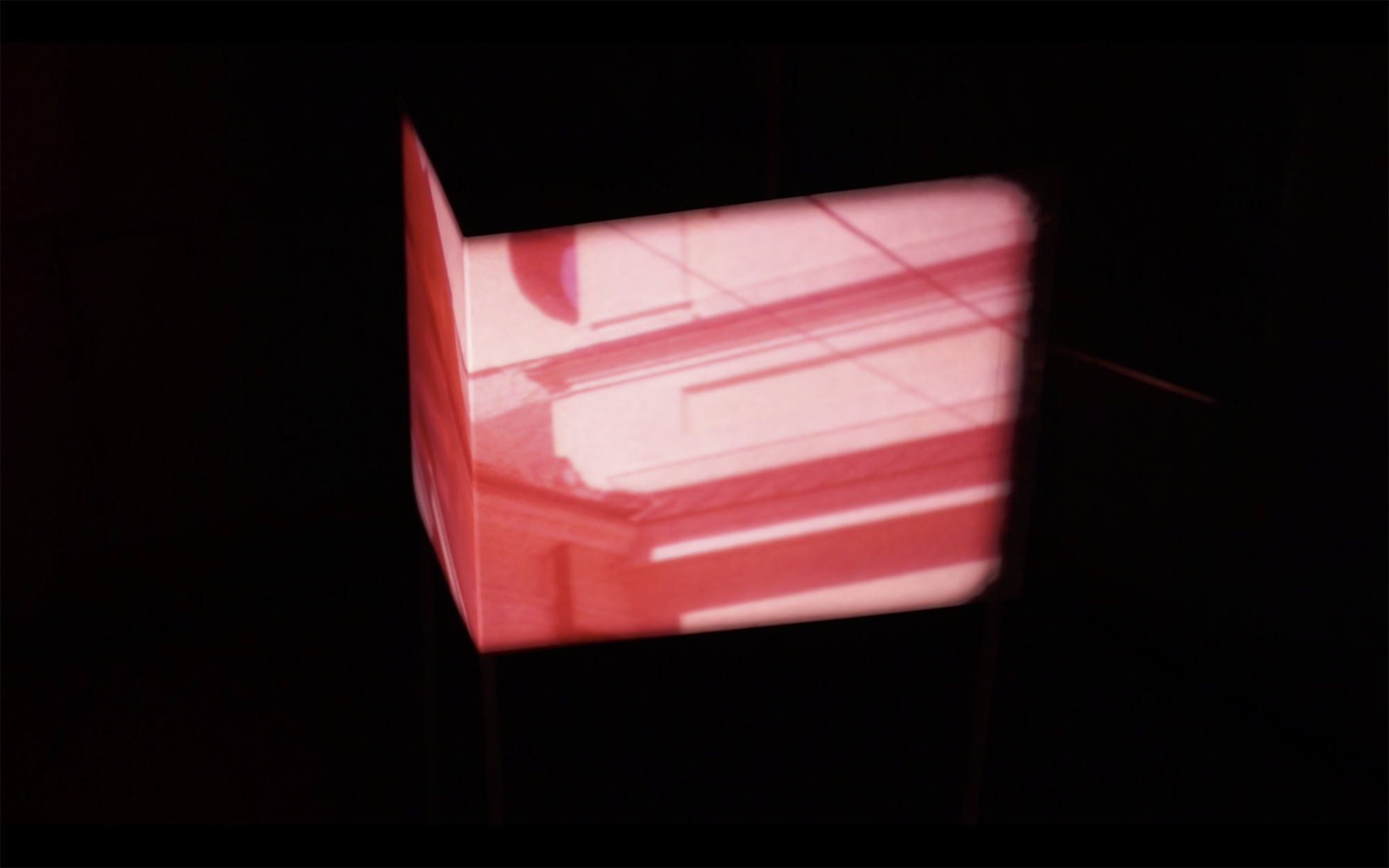

notprojektion
Installation: aluminium, 16 mm projector
2018
Raphael Reichl adapted his 16 mm film installation Rot Grün Geburt (Red Green Birth) for the exhibition pubic viewing, which took place during the public screening of the 2018 Football World Cup held next to it. The artist thus re-functions the dispositive, the projector and the screen as the popular and the regime of images. But the work recognises the difference between digital culture, vis-à-vis the huge LCD screen mounted outside, which glows from itself, and the principle of analogue projection, which casts its images onto a support via light. In the arrangement of the notgalerie, however, this light is no longer cast by the machine, but by the sun, which takes on a colour pattern from outside through the installation Notrichter and is distributed throughout the space.
(Written by Reinhold Zisser)
Group exhibition: pubic viewing at the notgalerie, Aspern North, Vienna
notprojektion
Installation: Aluminium, 16 mm Projektor
2018
Raphael Reichl adaptierte seine 16mm Film Installation Rot Grün Geburt für die Ausstellung pubic viewing, die während dem daneben veranstalteten Public-Screening der Fußballweltmeisterschaft 2018 stattgefunden hat. In der Ausstellung der Notgalerie werden die Projektionswerkzeuge selbst zu darstellenden Gegenständen. Der Künstler funktioniert somit das Dispositiv, den Projektor und die Leinwand als dem Populäreren und dem Regime der Bilder, um. Die Arbeit erkennt aber den Unterschied zwischen der digitalen Kultur, gegenüber dem draußen angebrachten riesigen LCD Screen, welcher aus sich selbst heraus leuchtet, und dem Prinzip der analogen Projektion, welche über Licht ihre Bilder auf einen Träger wirft. Dieses Licht wirft in der Anordnung der notgalerie aber nicht mehr die Maschine, sondern die Sonne, die von außen durch die Installation Notrichter ein Farbmuster annimmt und sich im Raum verteilt.
(Text von Reinhold Zisser)
Gruppenausstellung: pubic viewing in der notgalerie, Aspern Nord, Wien
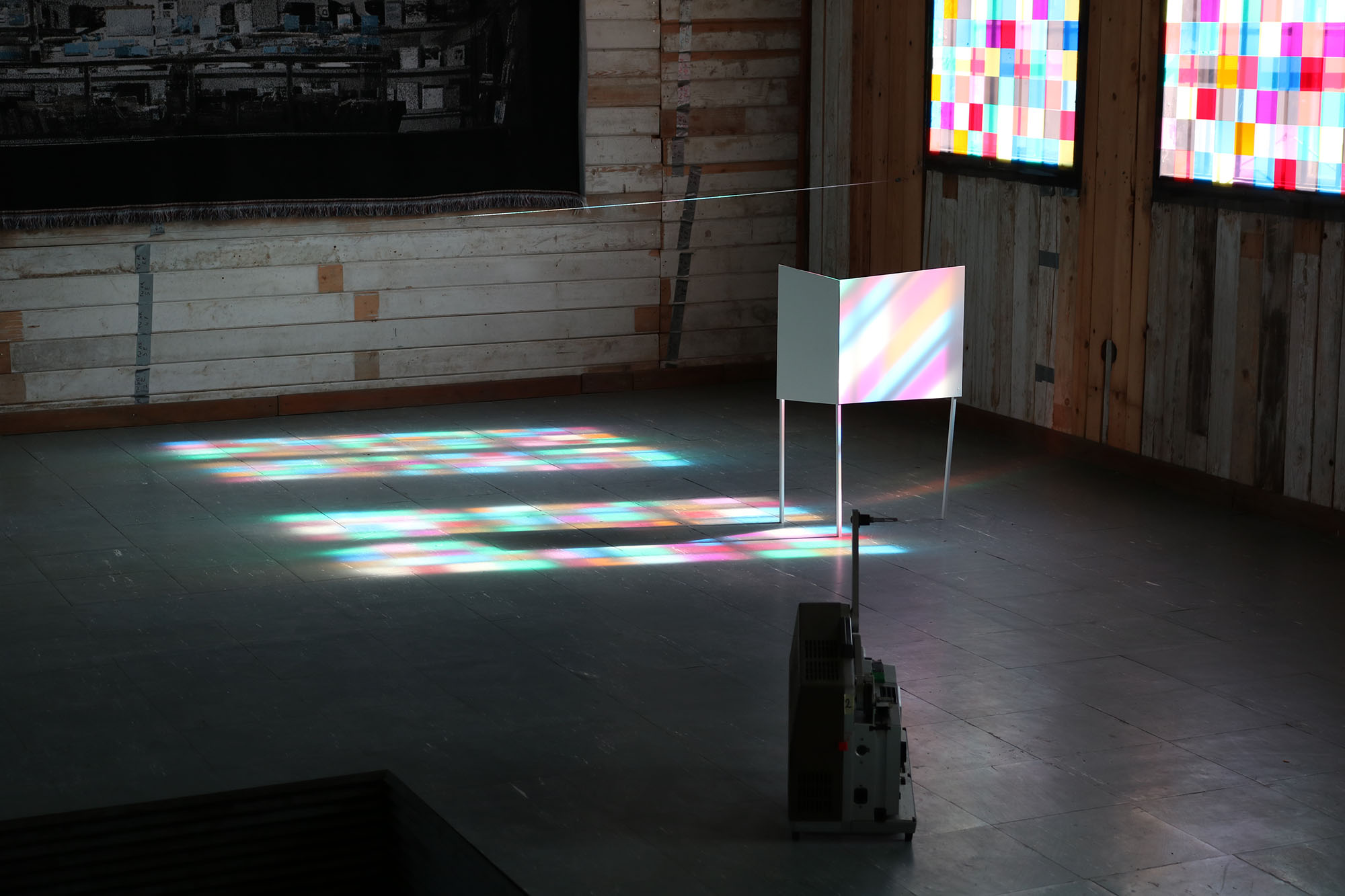
t t t touch me
Super 8 (blow-up 16 mm), colour, silent, 3 min
2017
Typing, pressing, striking, swiping—finger movements that are not carried out on the touchscreen of a smartphone, but instead, on naked skin. Raphael Reichl investigates the transformation of perception and communication in the digital era—on analogue film. A haptic visual experience, which makes tangible, the loss of analogue qualities.
Raphael Reichl explores the extent to which the digital penetration of all areas of life causes the transformation of needs, communication and perception. The fact that Reichl registers the gestures of everyday life on analogue film, the touches that seem to have lost of sensuality, is more than a statement: t t t touch me becomes a haptic visual experience that makes the loss of analogue qualities in the digital age tangible in the flesh.
(Written by Michelle Koch, Diagonale 20')
Filmstills
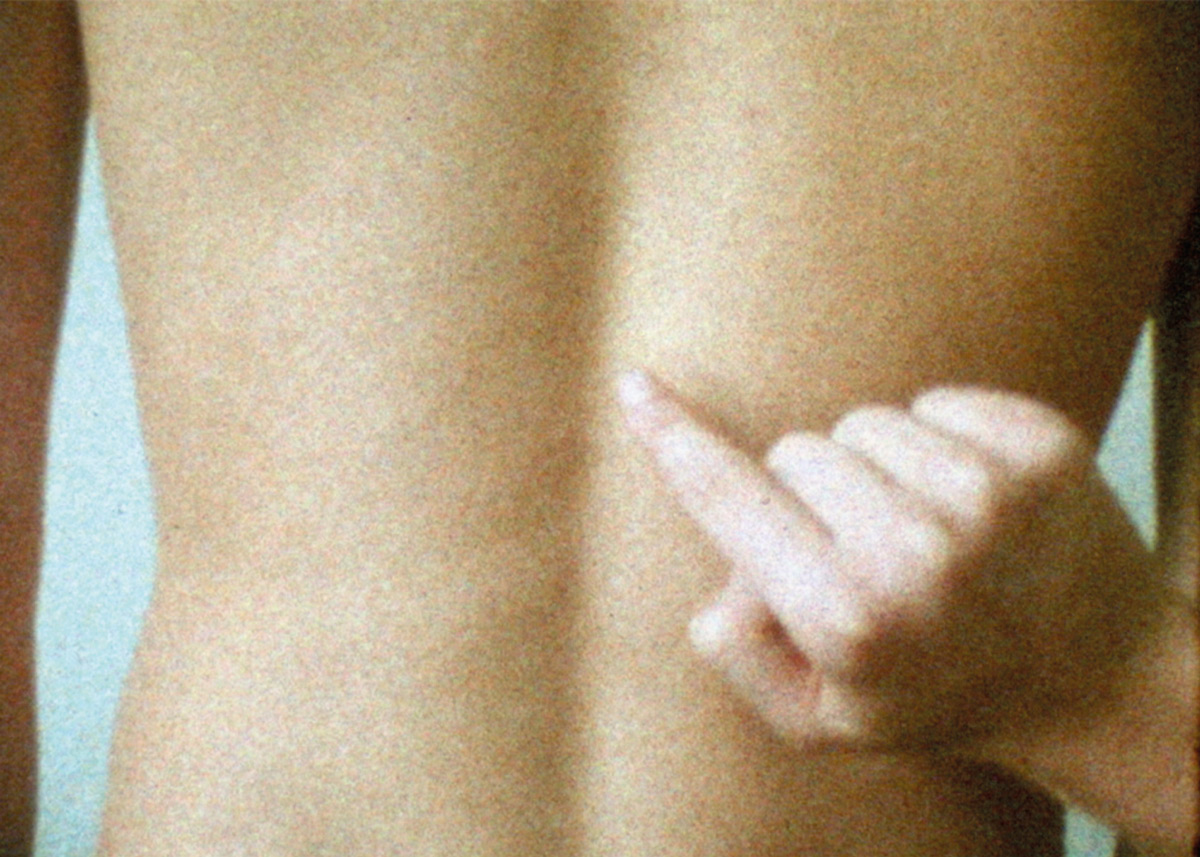
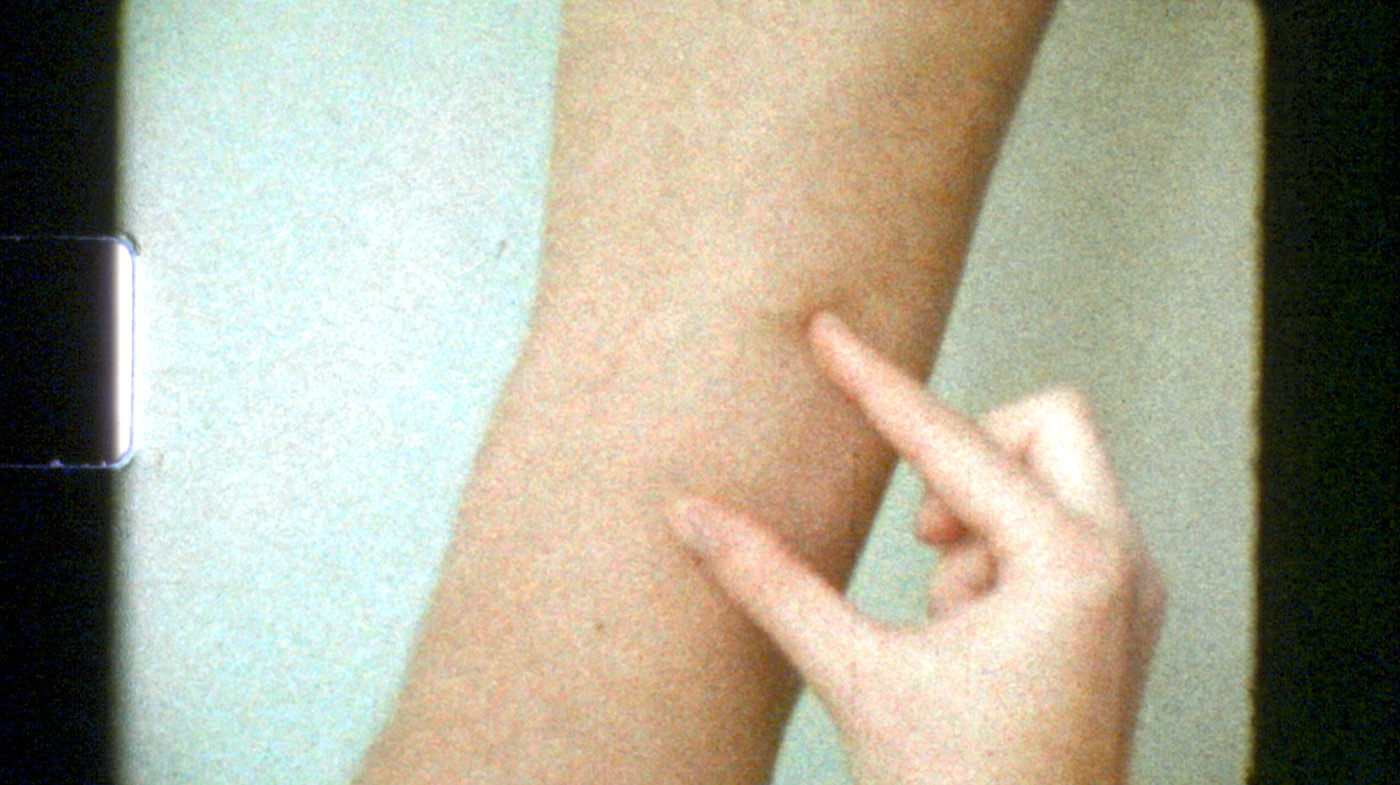
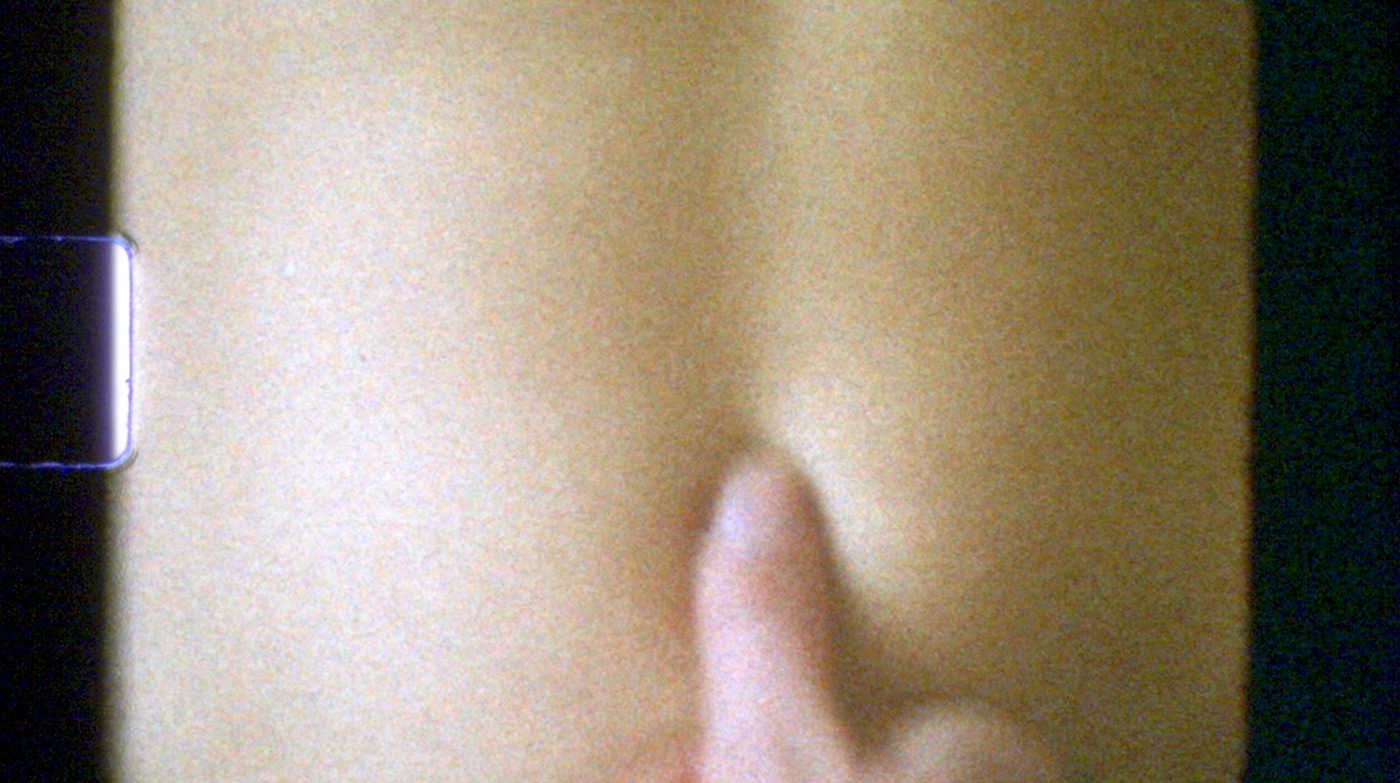
Exhibition view: Rituals IV—Body, Fotogalerie Vienna
Ausstellungsansicht: Rituale IV – Körper, Fotogalerie Wien
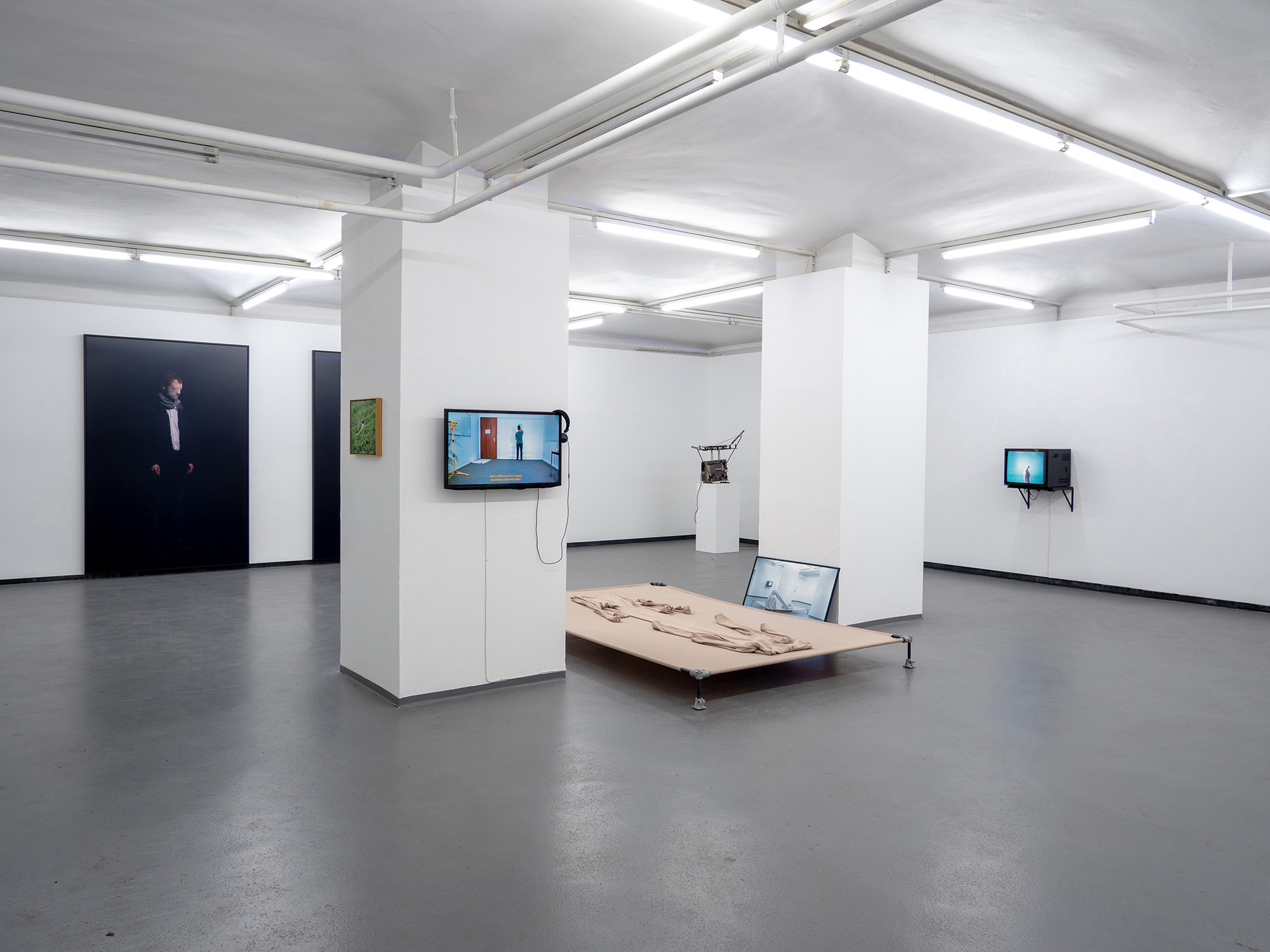
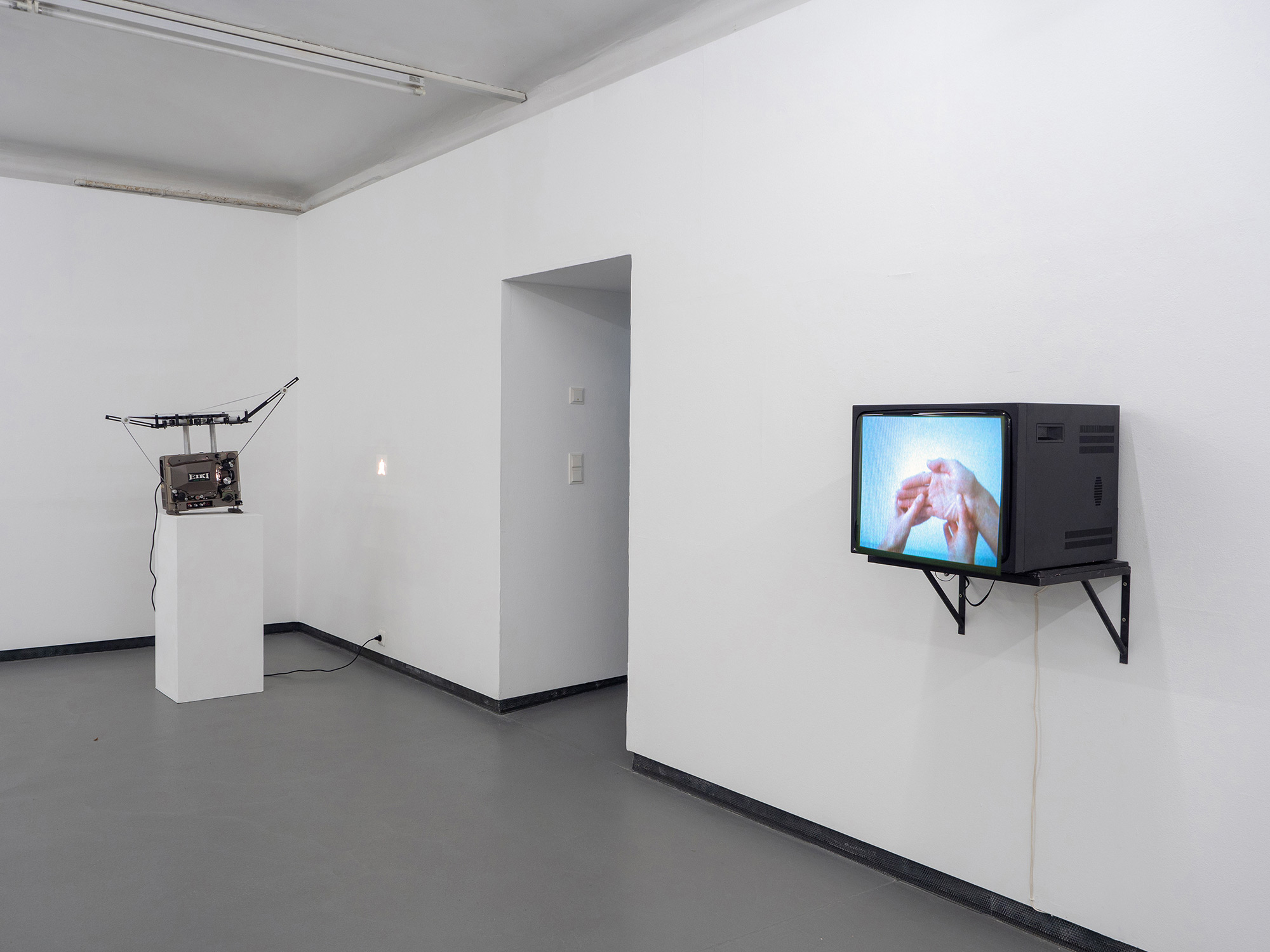
Photos by Fotogalerie Wien
Fotos von Fotogalerie Wien
12 24
16 mm, colour, silence, 3 min
2017
Leave the body in complete darkness,
gentle fingertips remain in need,
driven, the reel full of thoughts,
born in the camera by light,
sweeps 12 or 24 times over the eye,
before the pencil over the paper.
12 24
16 mm, Farbe, stumm, 3 min
2017
Verlasse den Körper in kompletter Dunkelheit,
sanfte Fingerspitzen bleiben zur Not,
getrieben rotiert die Spule voll mit Gedanken,
geboren in der Kamera durch Licht,
streift 12 oder 24 Mal über das Auge,
zuvor noch der Stift über das Papier.
Filmstills
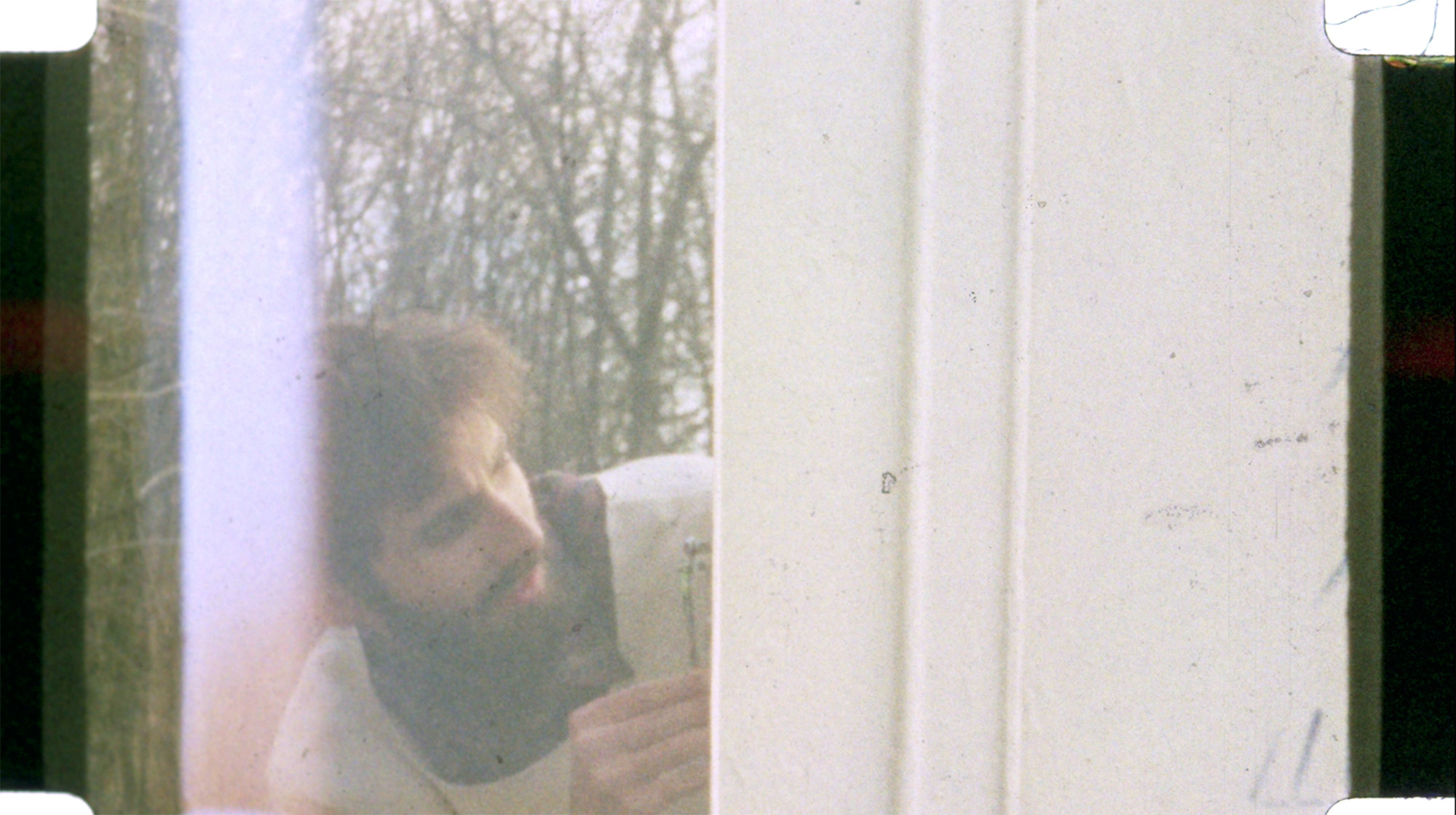
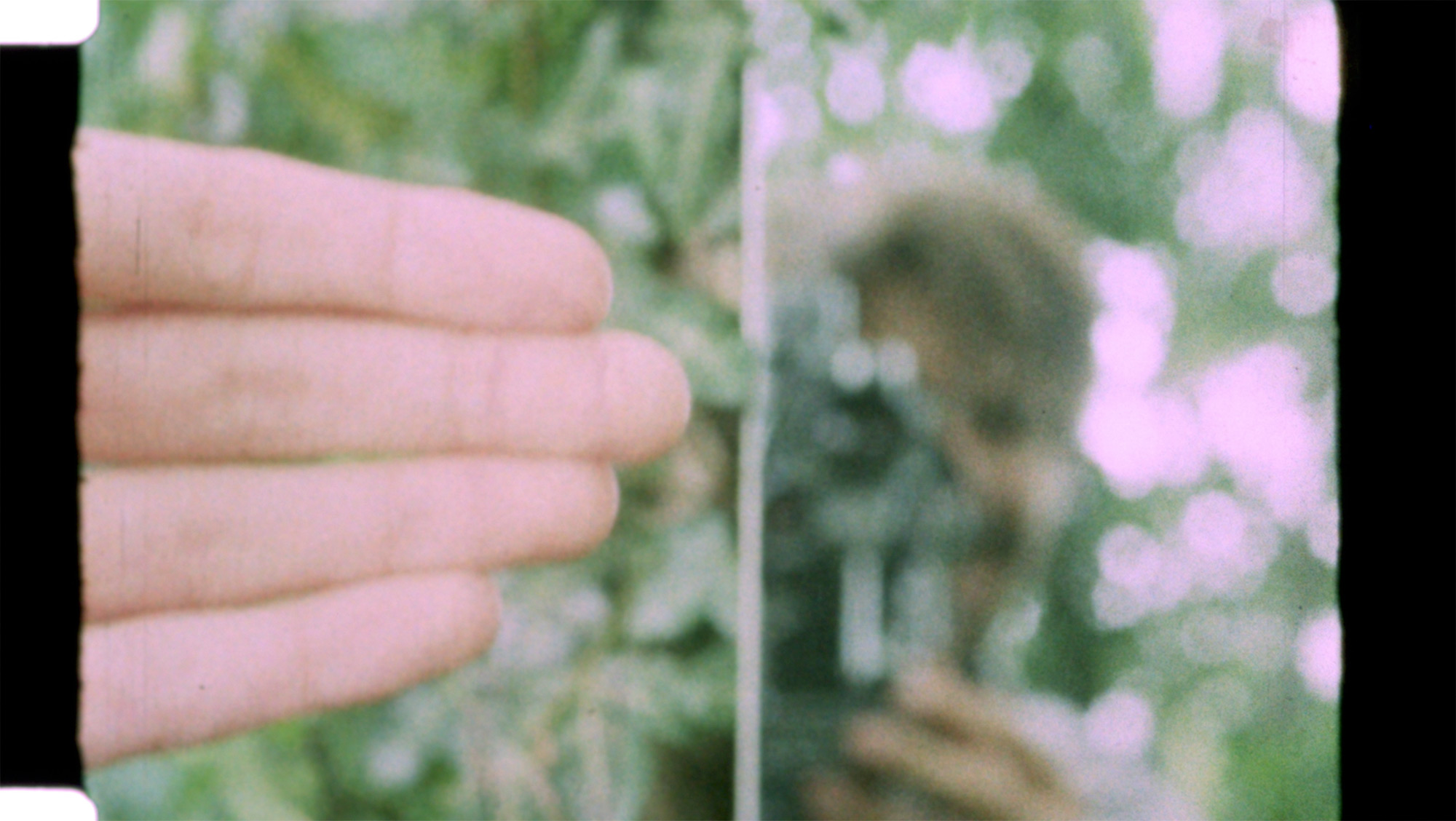
¡Vení Ve!
sounds, sayings and gestures
Video, colour, sound, 4 min
2016, Nicaragua
Director
Raphael Reichl
Camera
Gabriel Serra
Editing
Raphael Reichl
Collaboration
Amos Abdias, Waleska R. Cisne, Stalin Ocampo, Róger Ortíz, Hamilton Reyes, Edgard Ruiz Roblez, Roberto Sandino
Nicaraguan idiosyncrasies, such as words, gestures and characteristics of behaviour, shaped artist Raphael Reichl's integration process on site. From everyday greetings to terms that have a different context of meaning, Reichl gradually explored the Nicaraguan slang. Together with friends from Granada, Nicaragua, he formed a dialogue of his own context and affective understanding of the nicaraguan slang.
¡Vení Ve!
Geräusche, Ausdrücke und Gesten
Video, Farbe, Ton, 4 min
2016, Nicaragua
Regie
Raphael Reichl
Kamera
Gabriel Serra
Schnitt
Raphael Reichl
Mitwirkende
Amos Abdias, Waleska R. Cisne, Stalin Ocampo, Róger Ortíz, Hamilton Reyes, Edgard Ruiz Roblez, Roberto Sandino
Die Idiosynkrasie Nicaraguas, wie Wörter, Gesten und Verhaltensmerkmale, prägte den Integrationsprozess des Künstlers Raphael Reichl vor Ort. Beginnend mit alltäglichen Begrüßungen bis hin zu Begriffen, die im Gebrauch einen anderen Kontext ergeben, vertiefte Reichl sich sukzessive ins Gewebe des nicaraguanischen Slang. Zusammen mit Freund:innen aus Granada, Nicaragua, entwickelte er in seinem Kontext und mit seinem Verständnis affektiv einen Dialog im nicaraguanischen Dialekt.
Videostills
